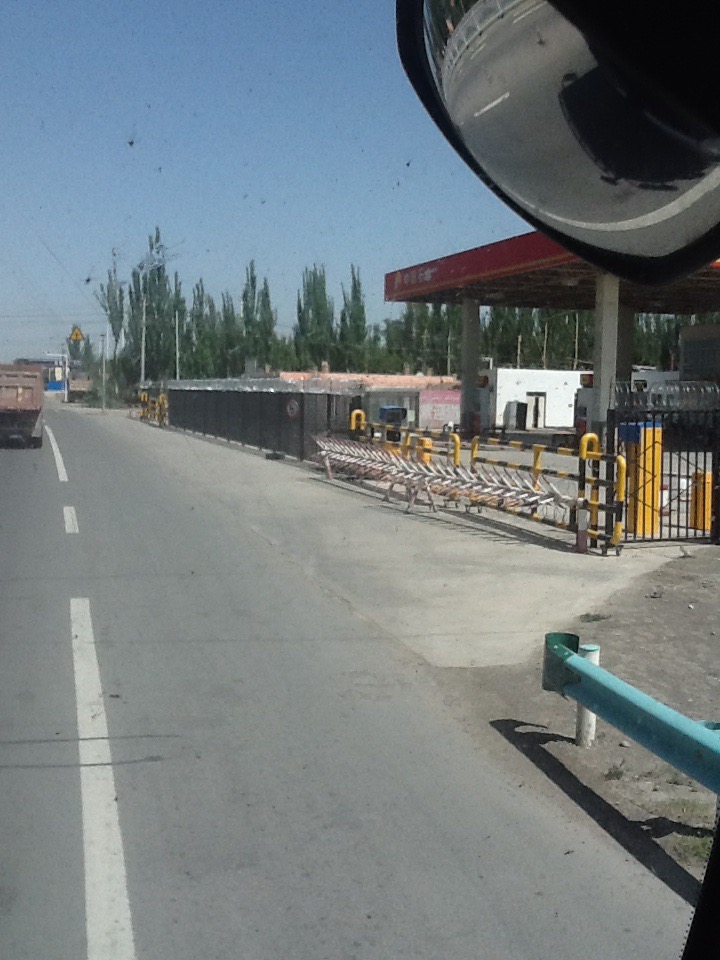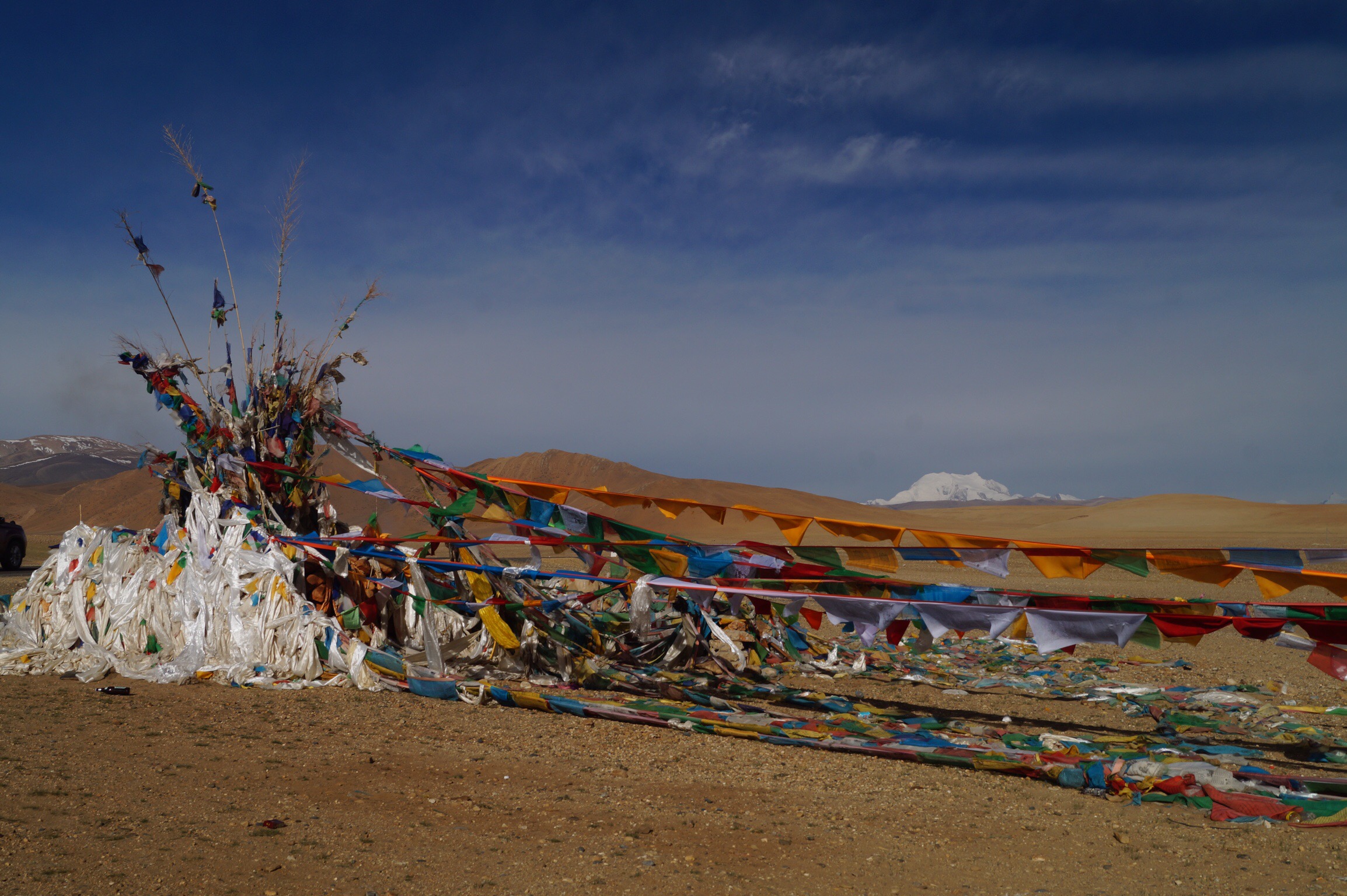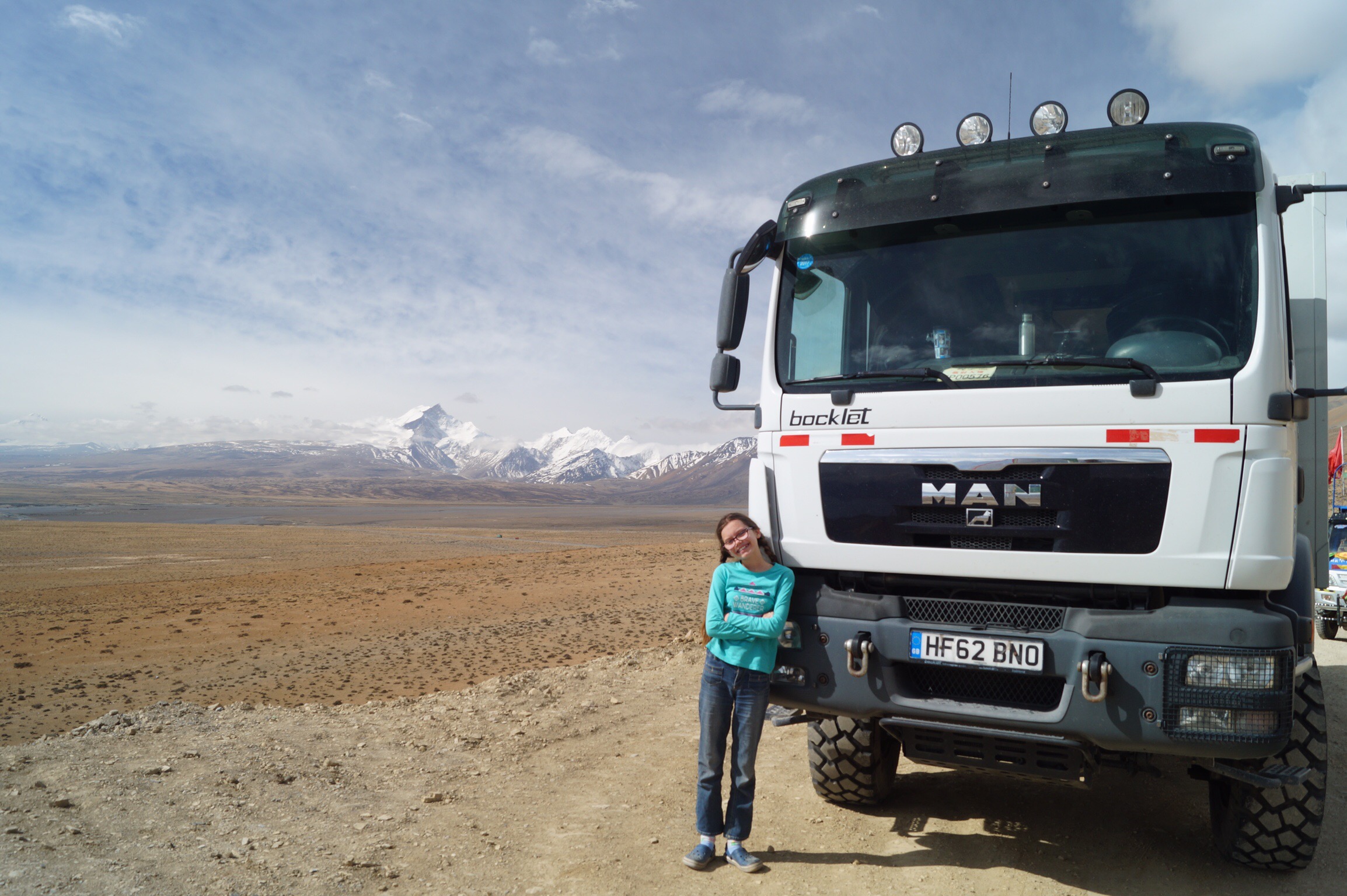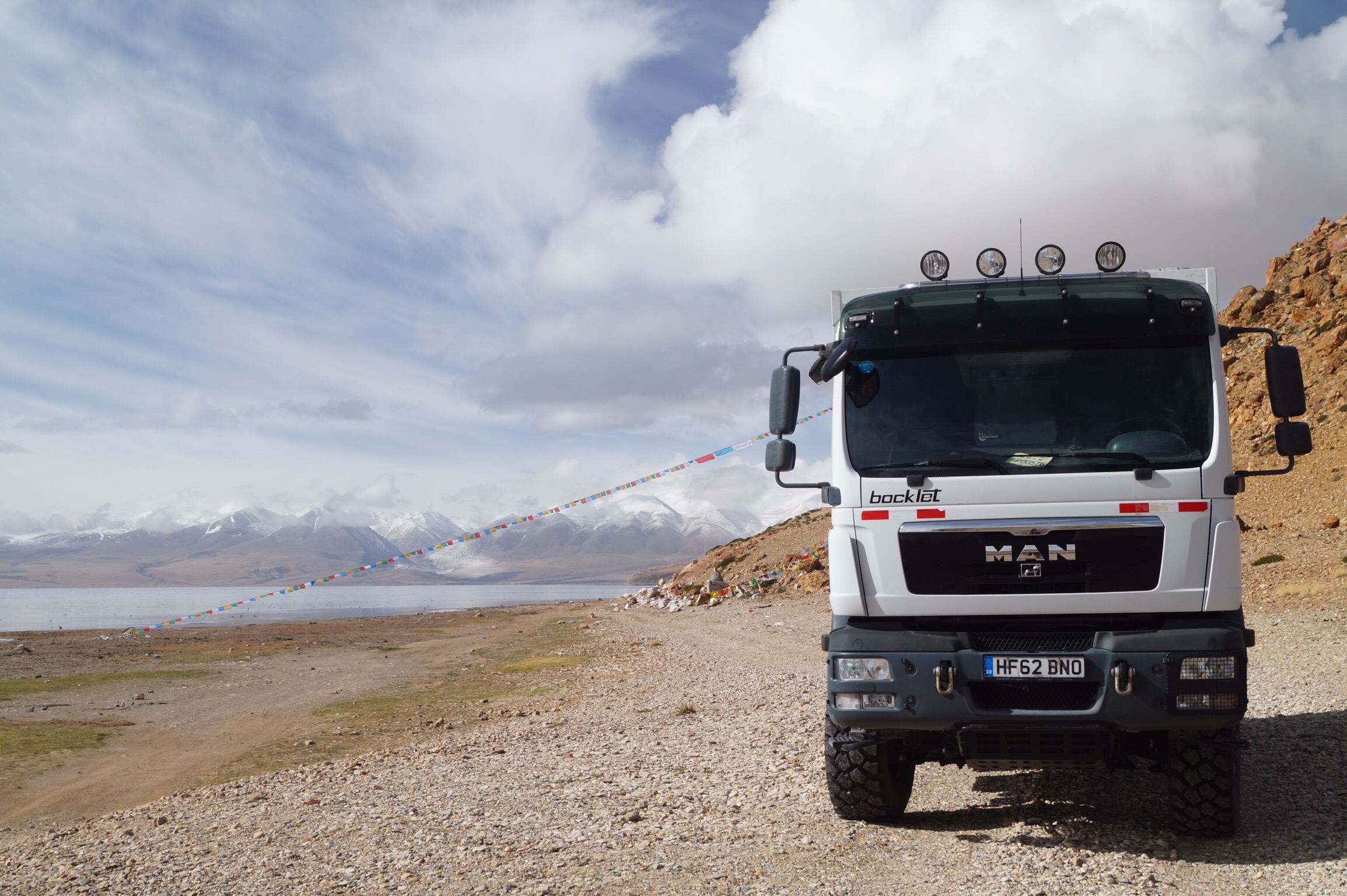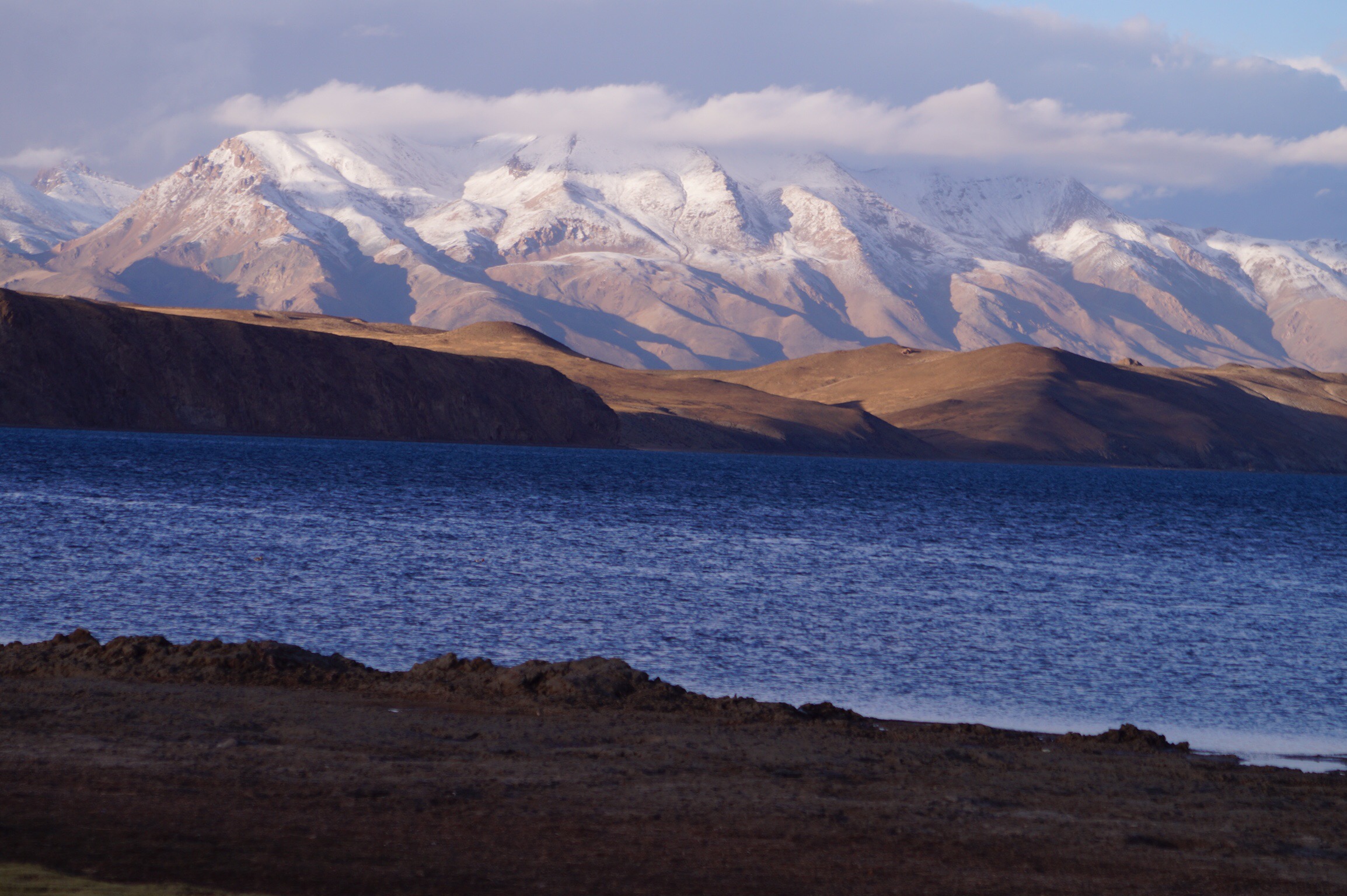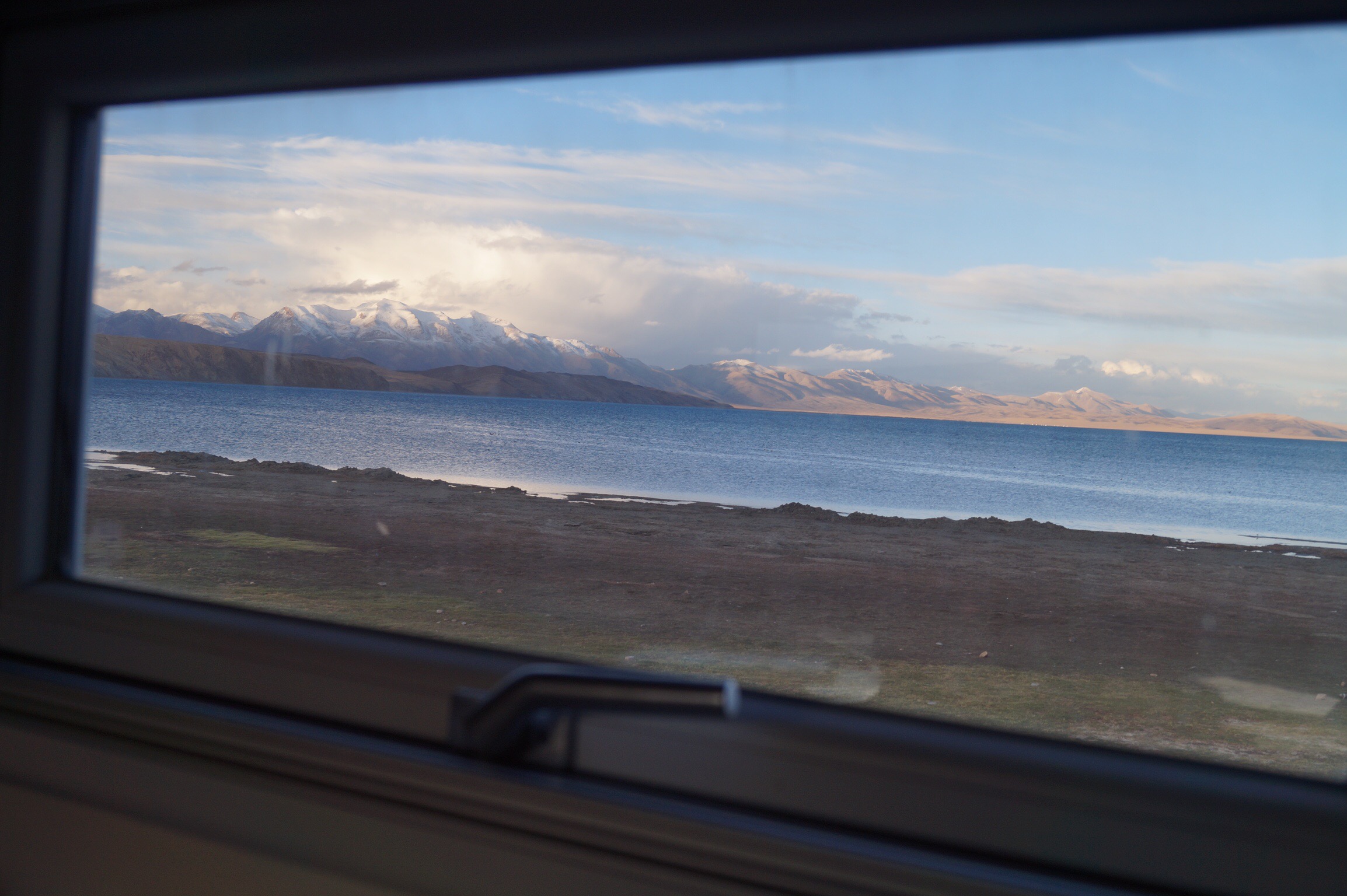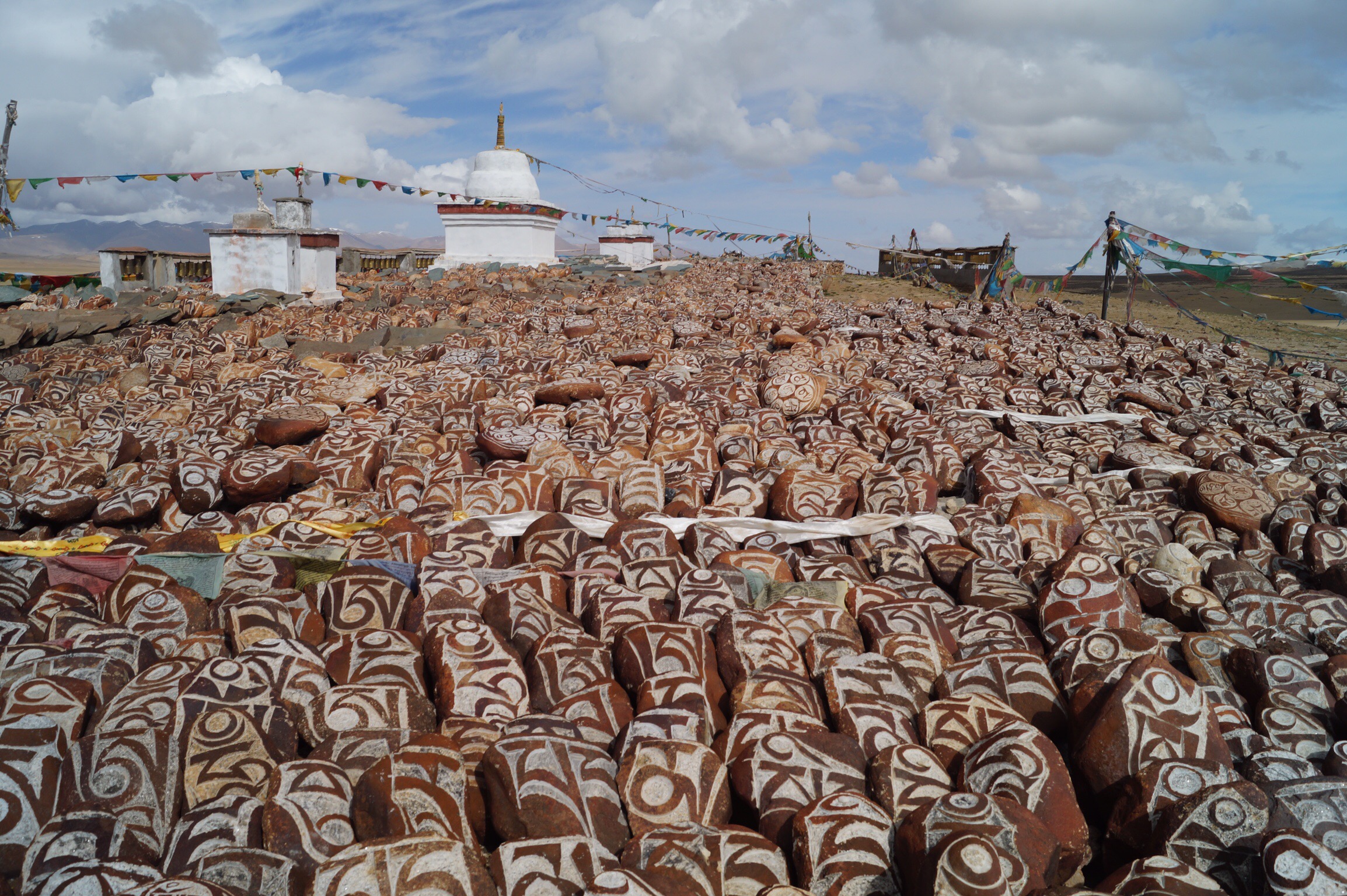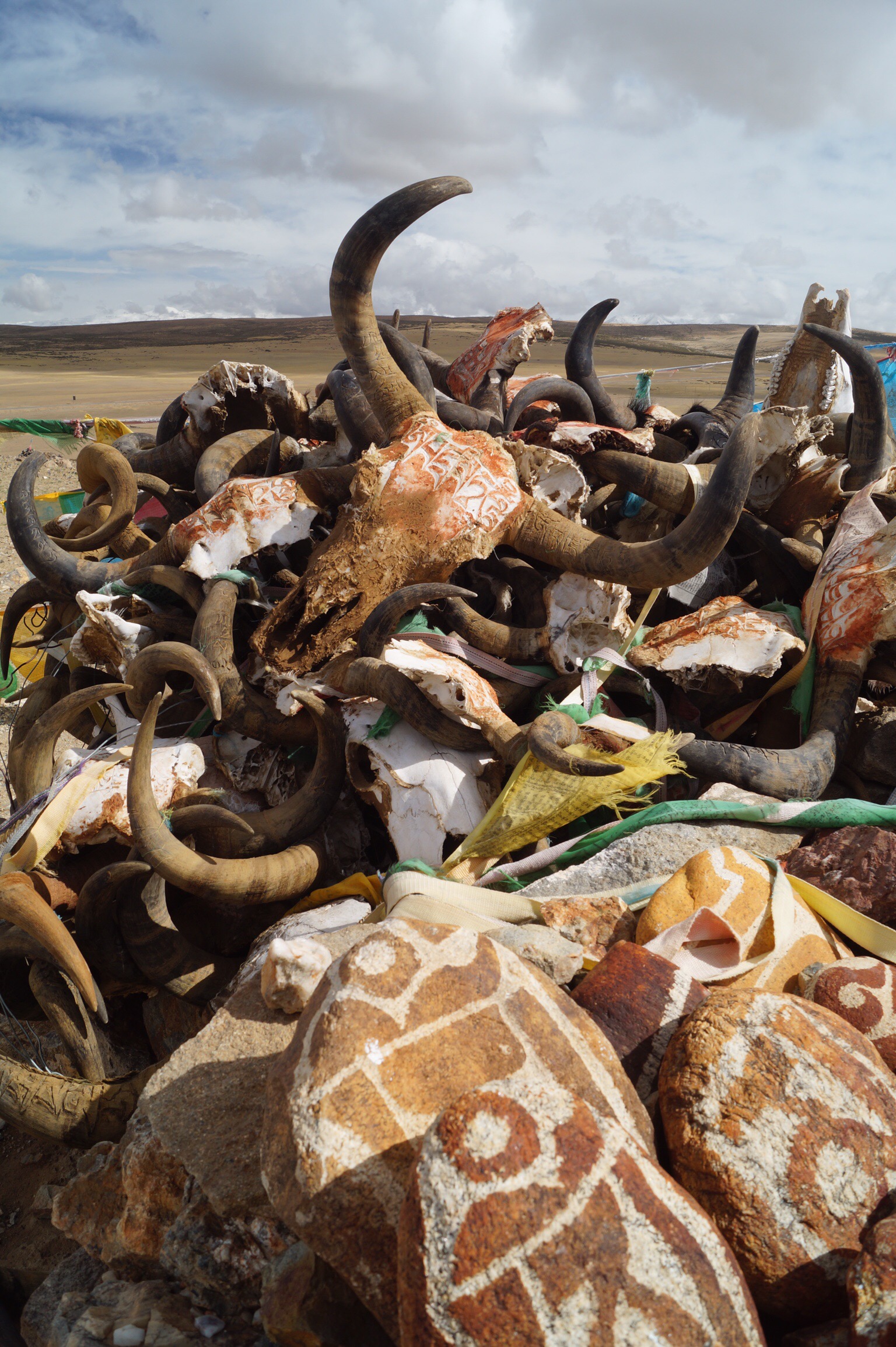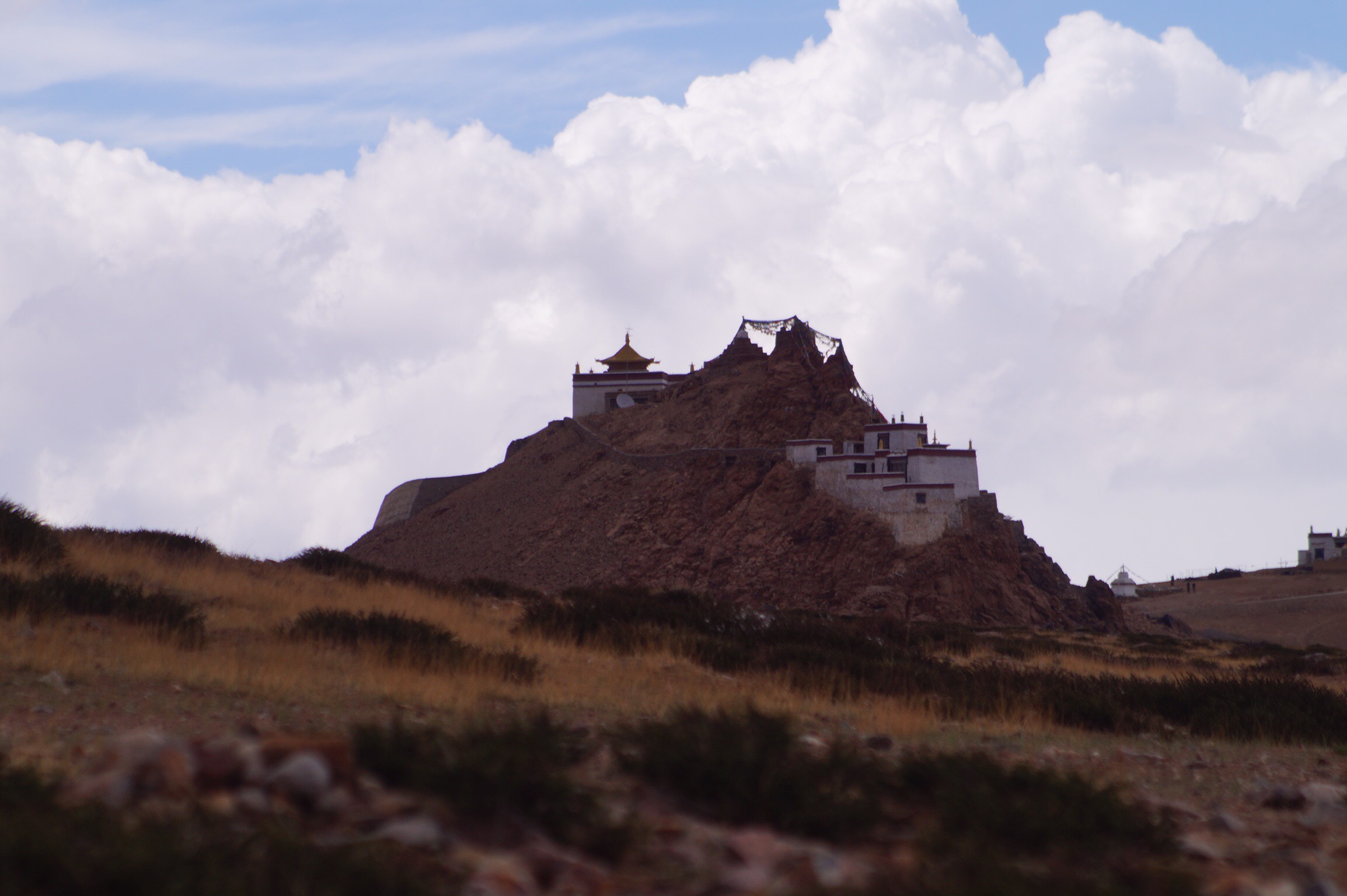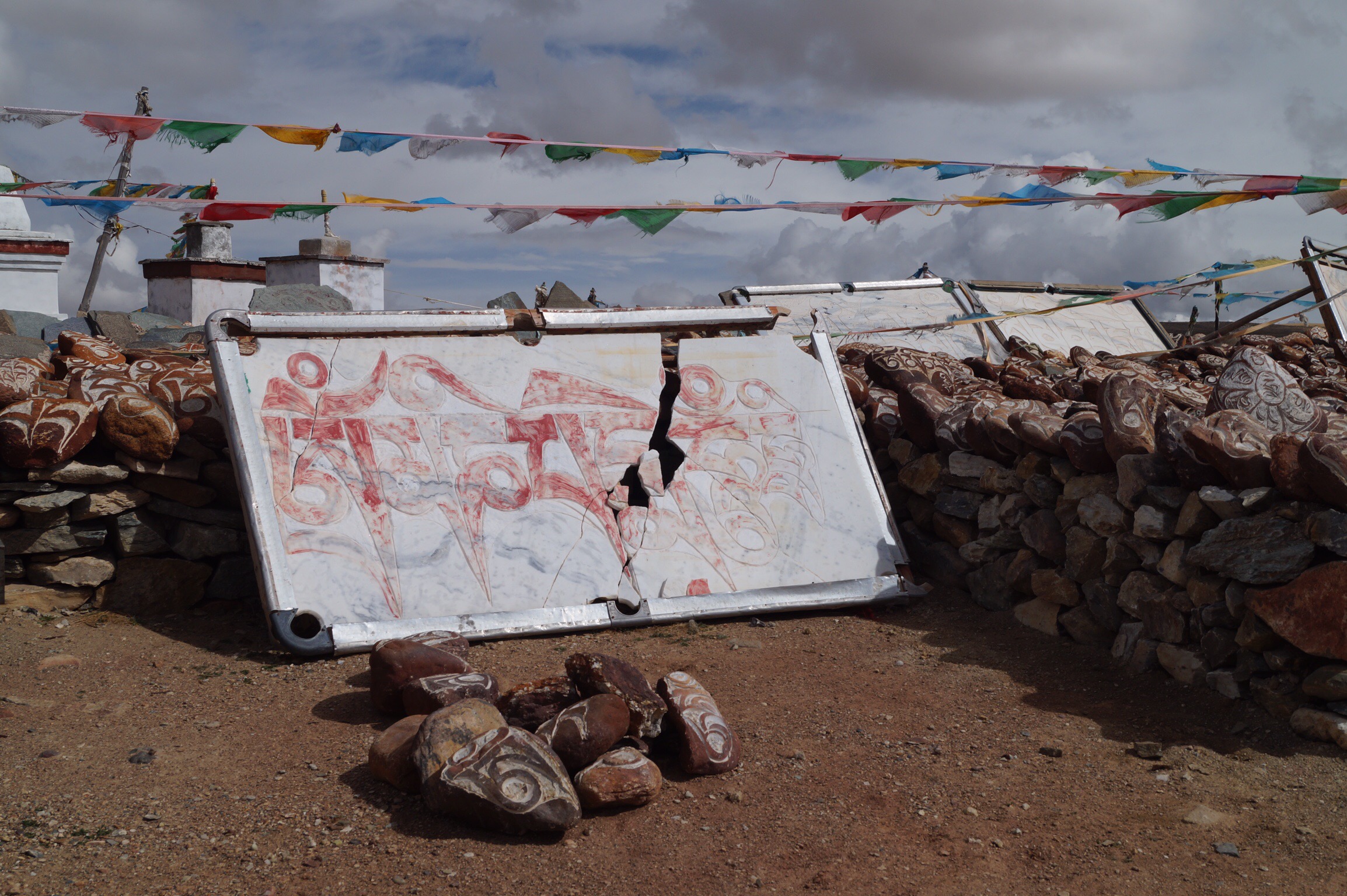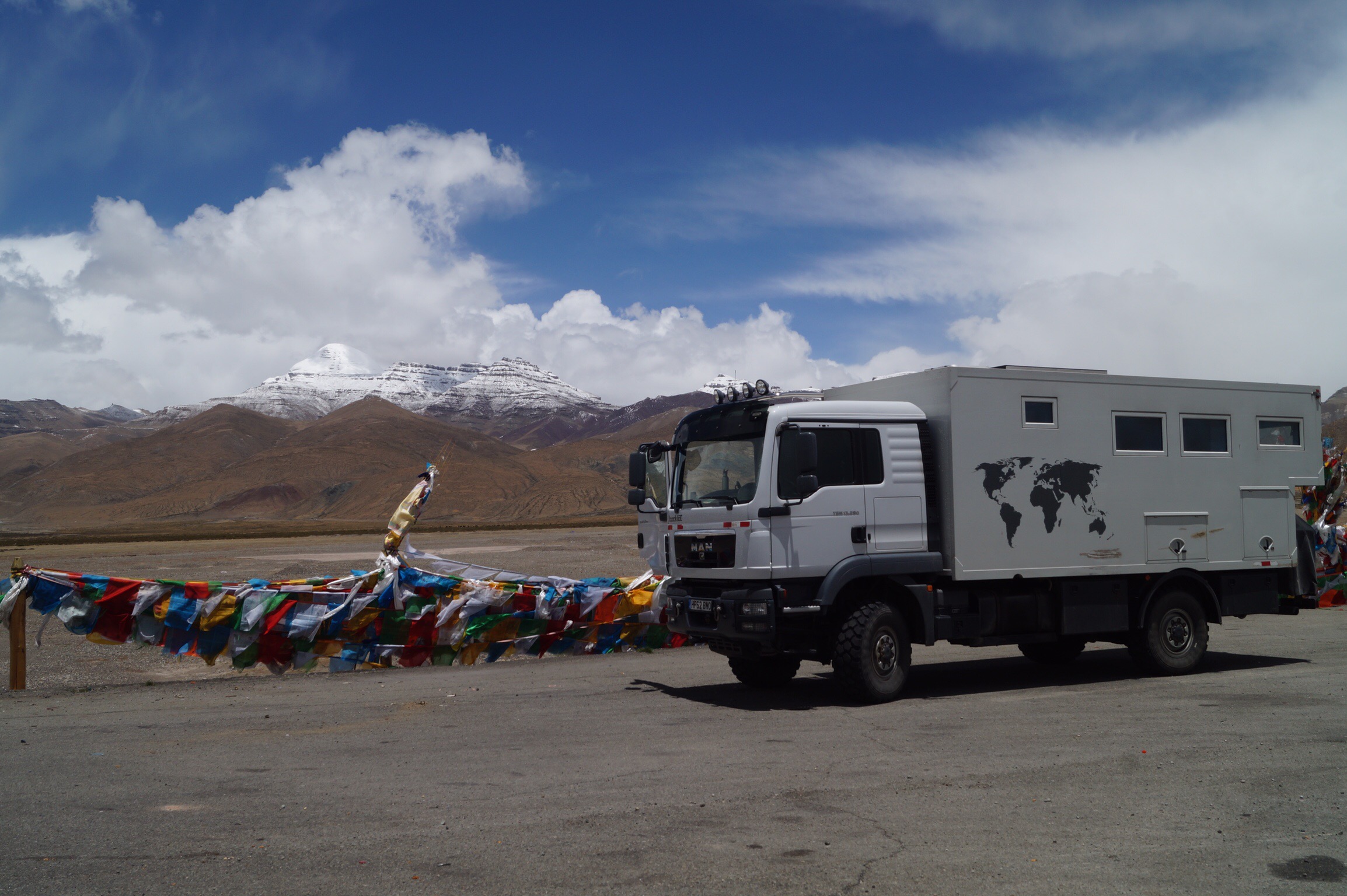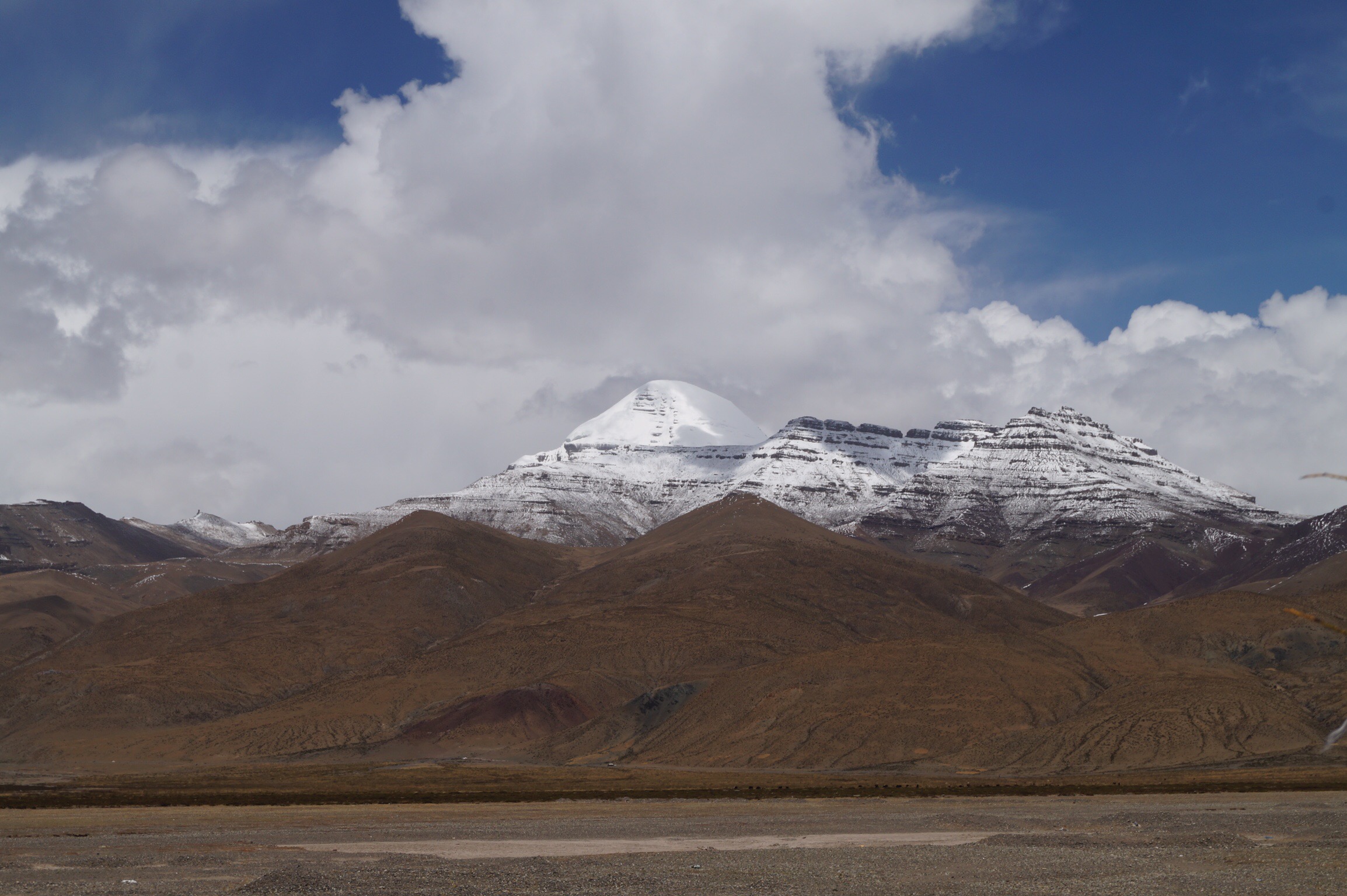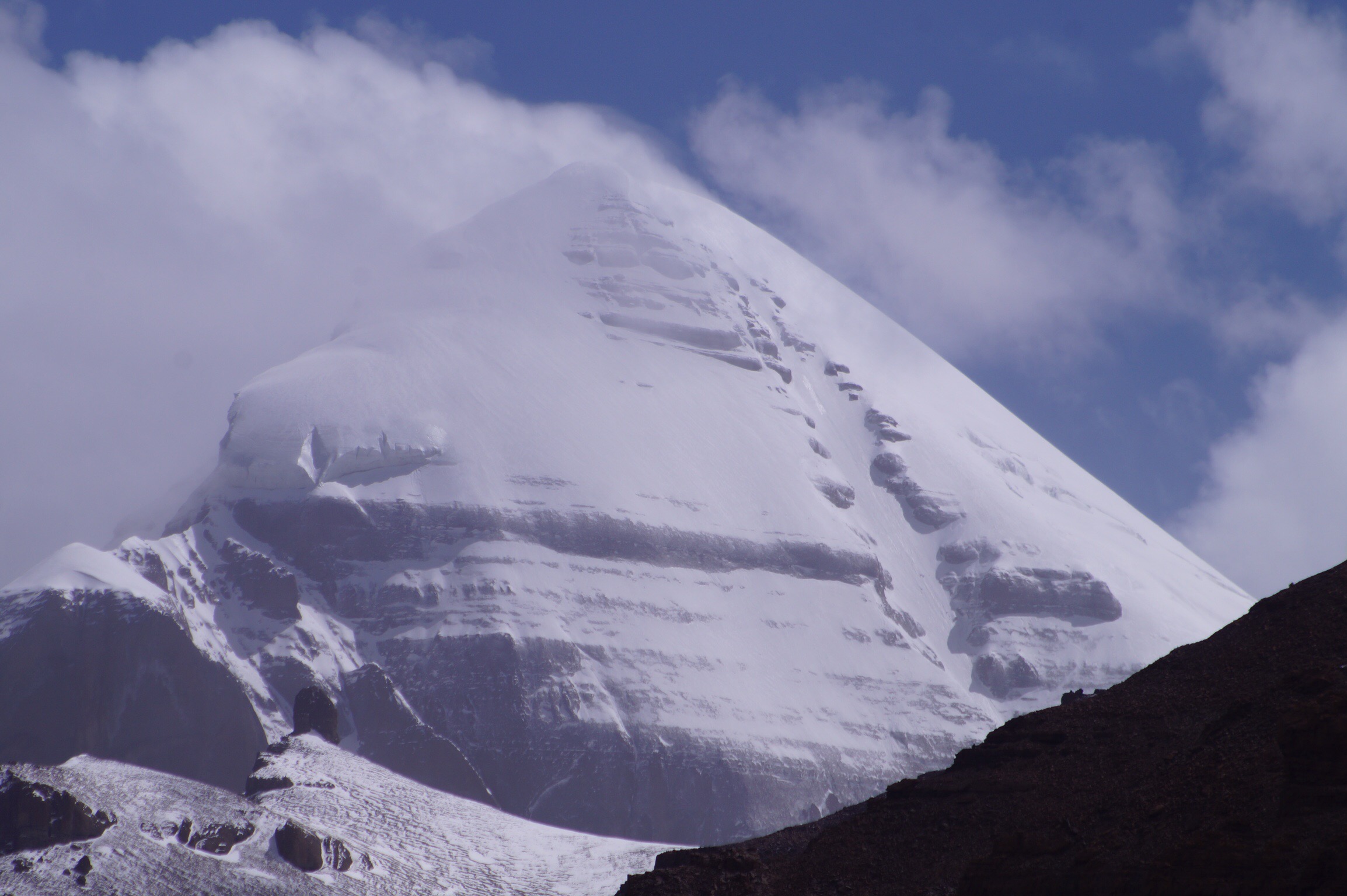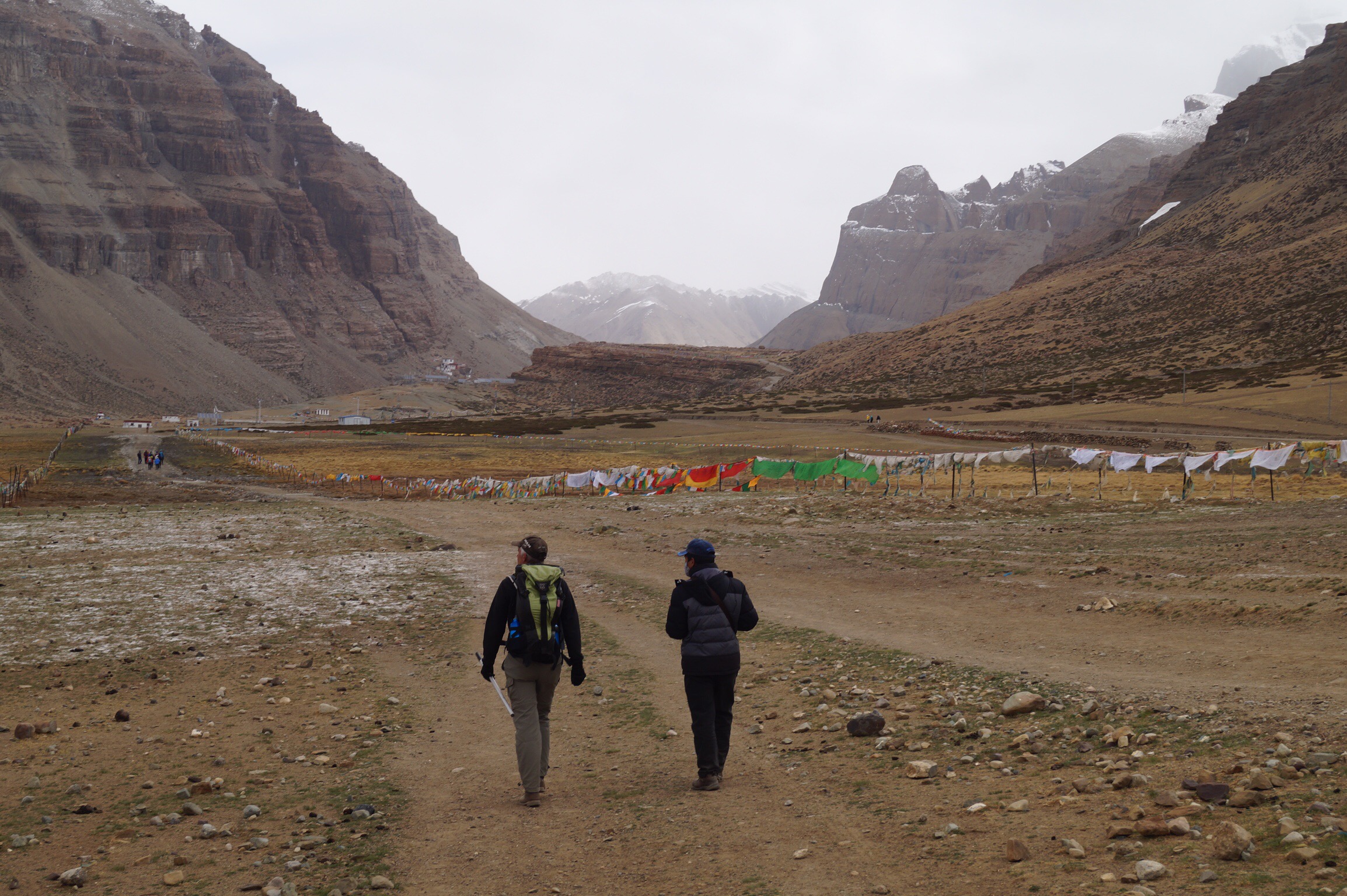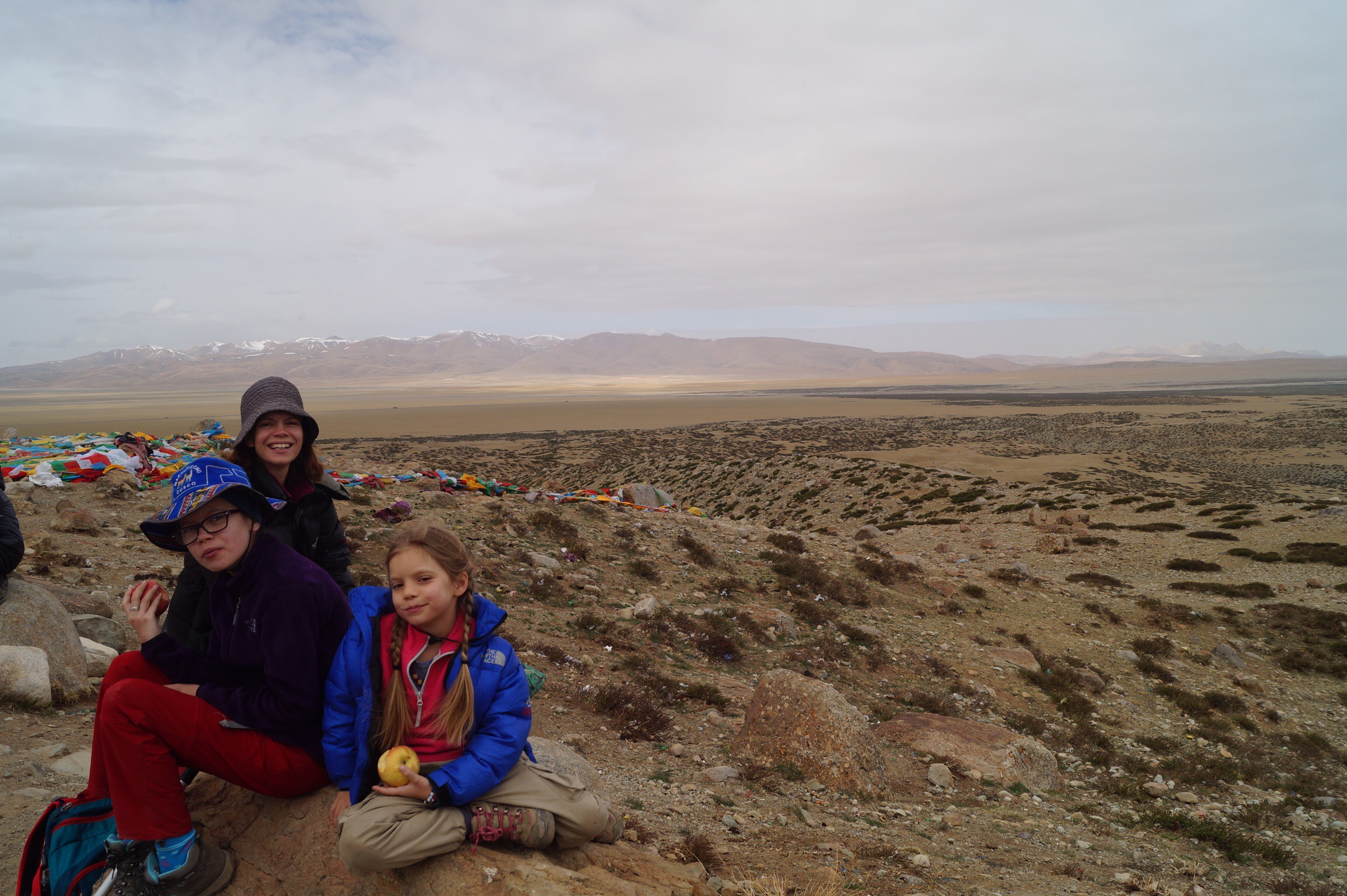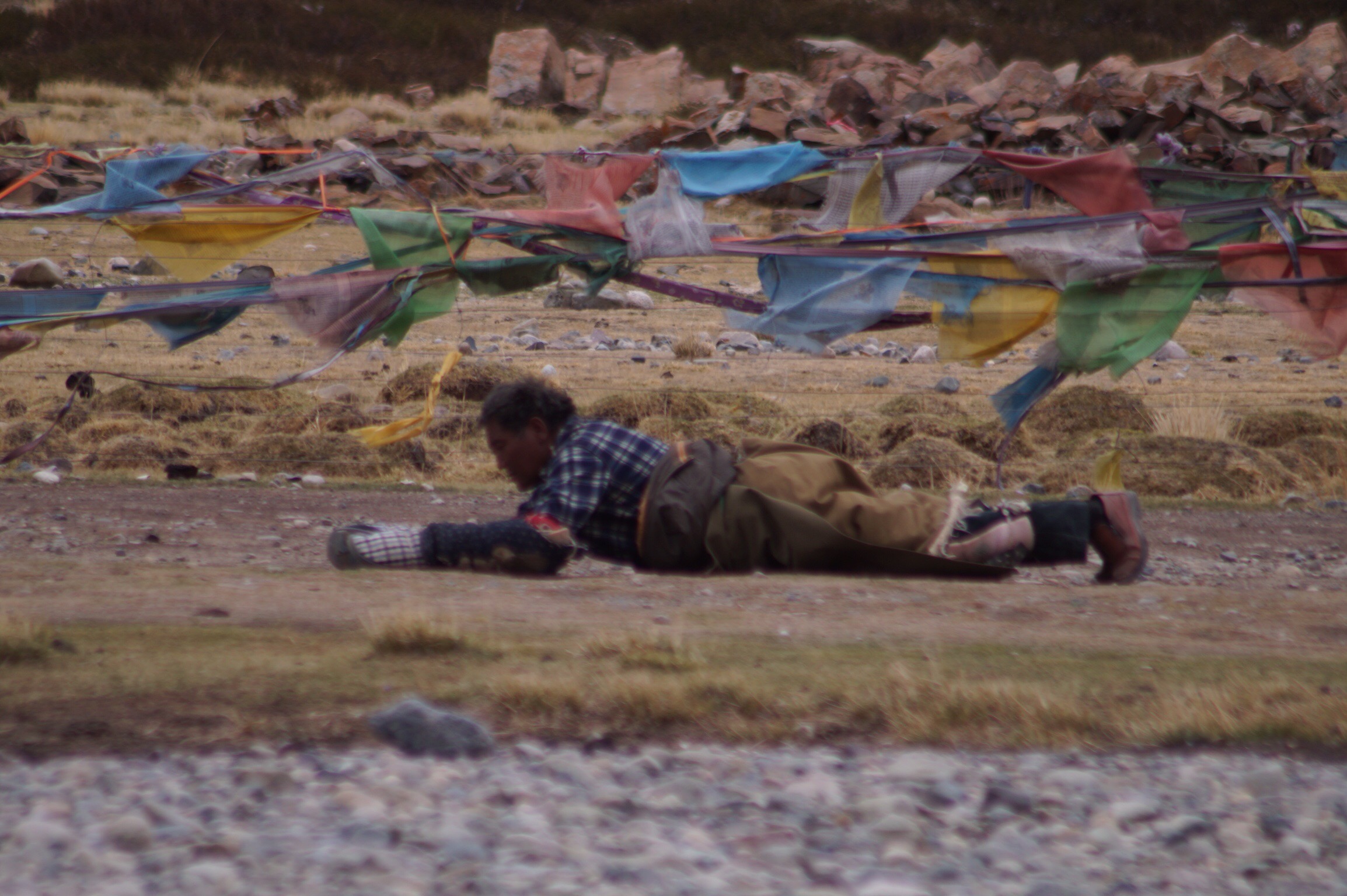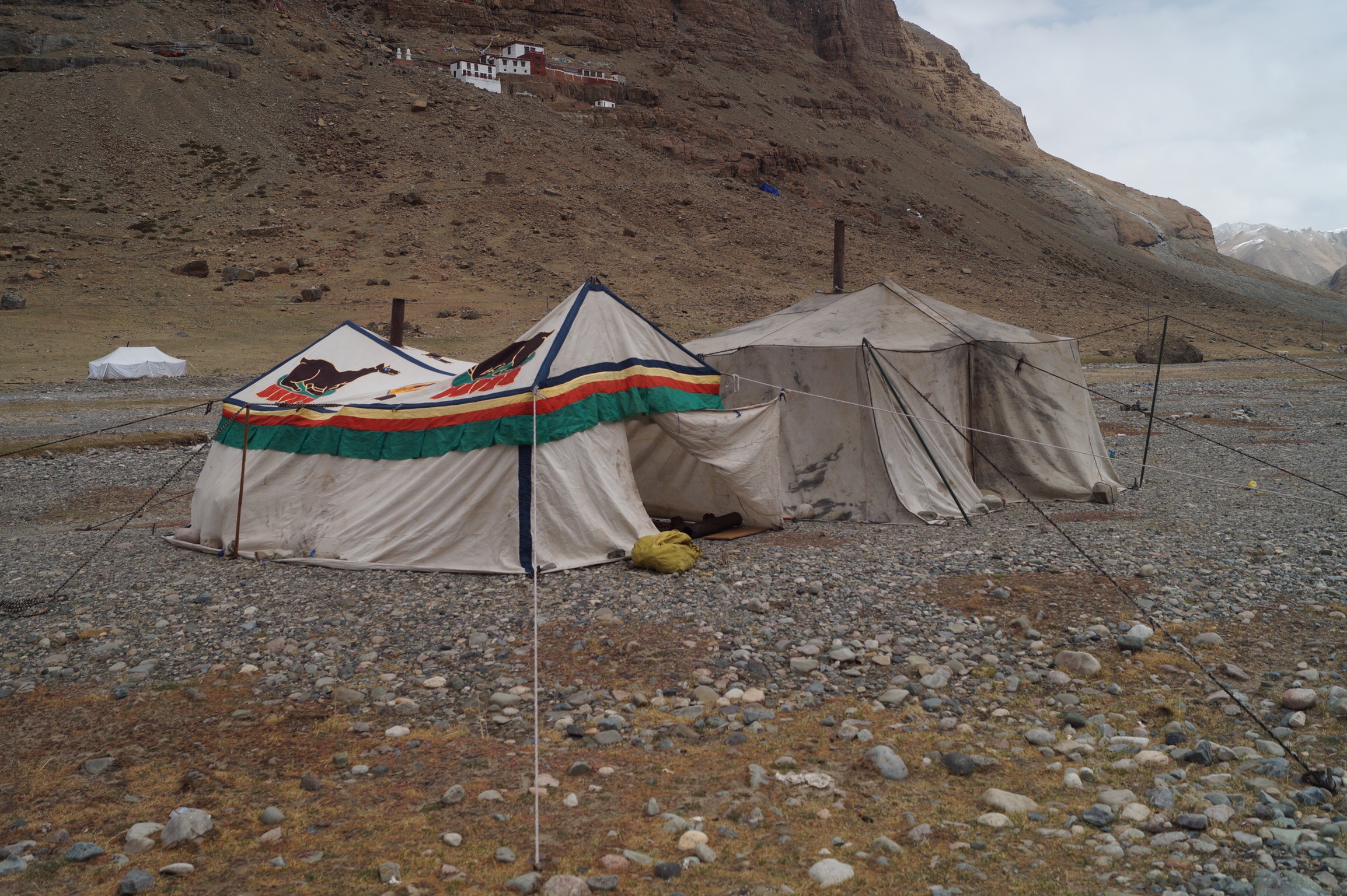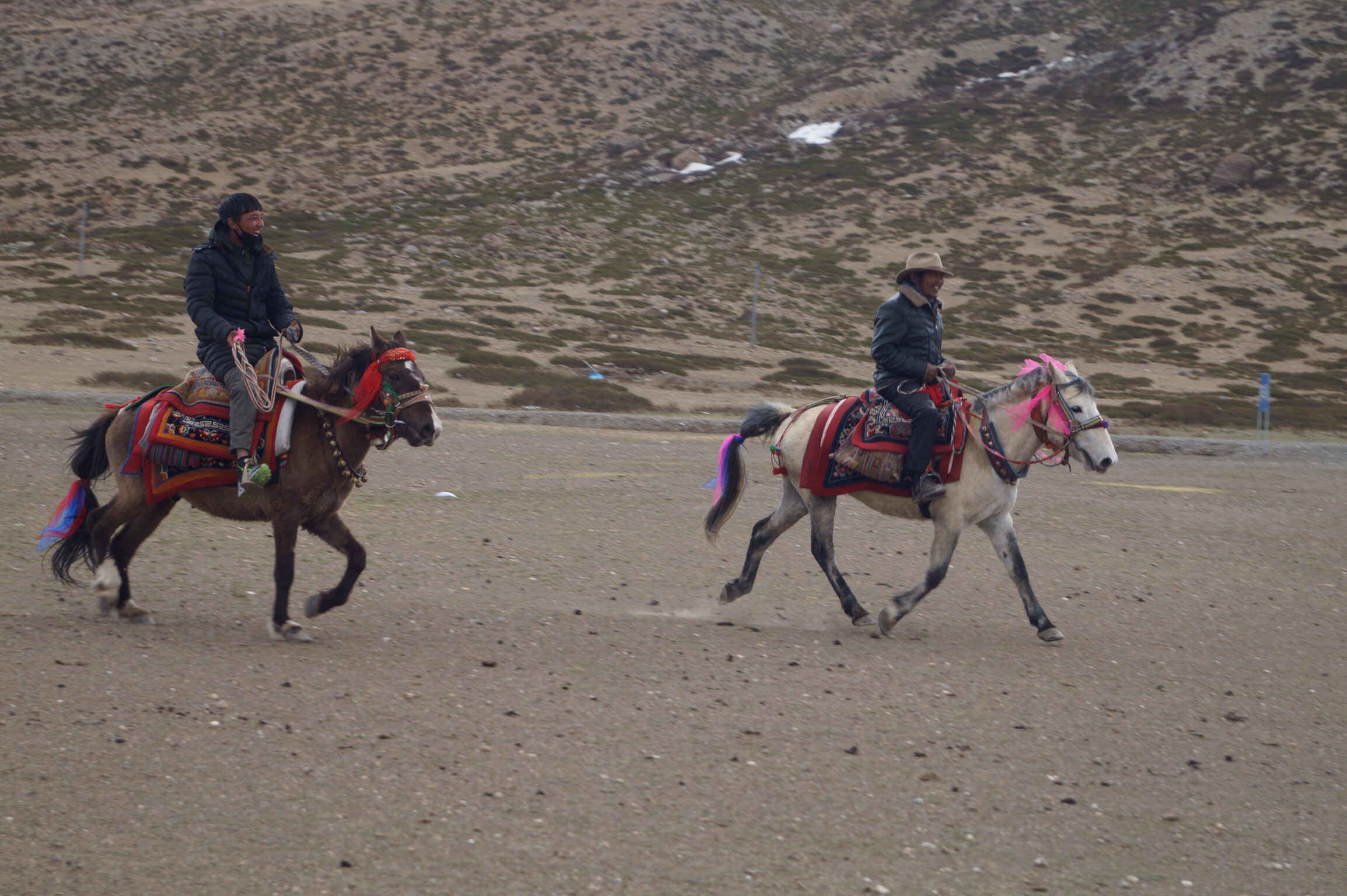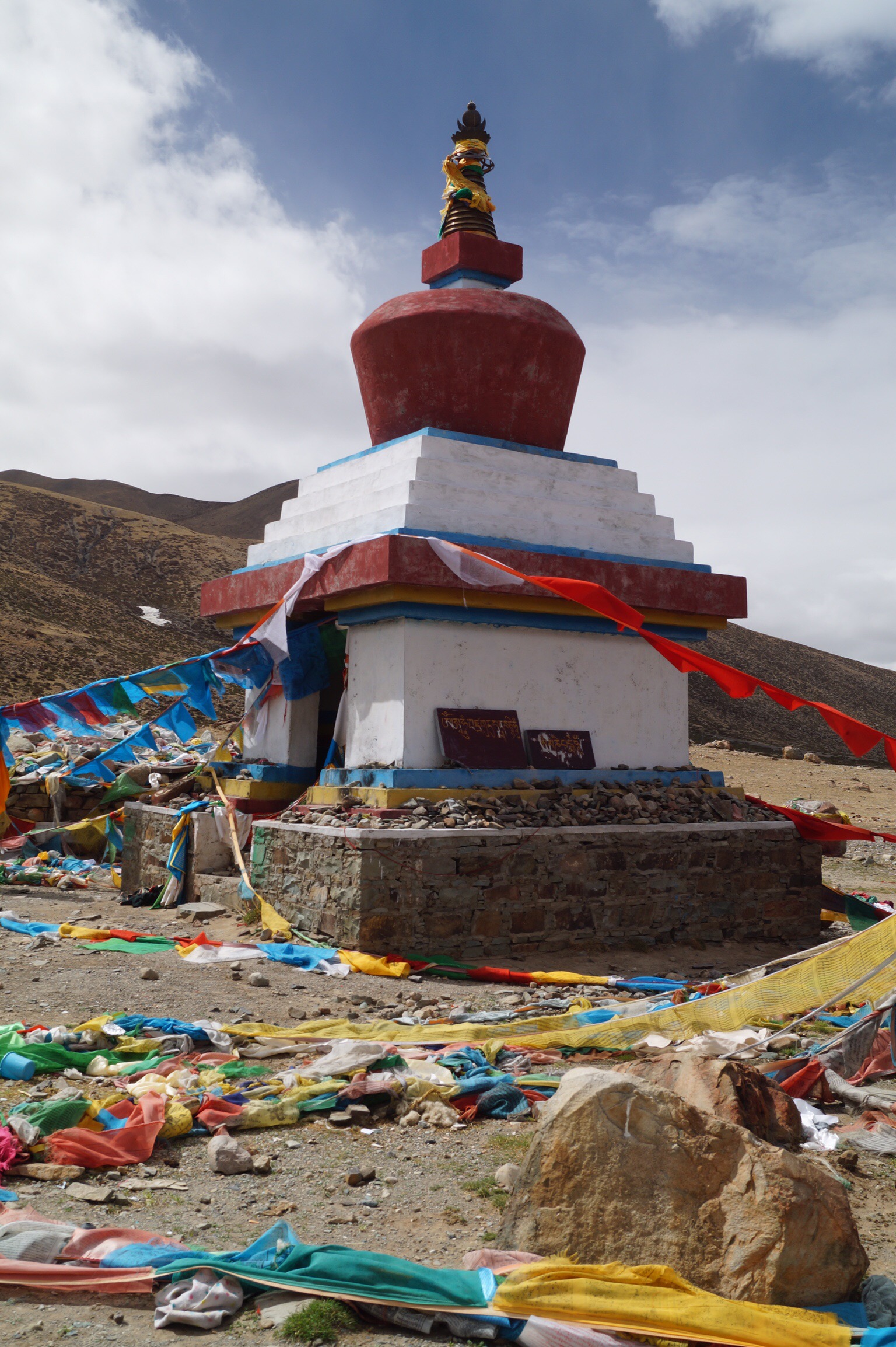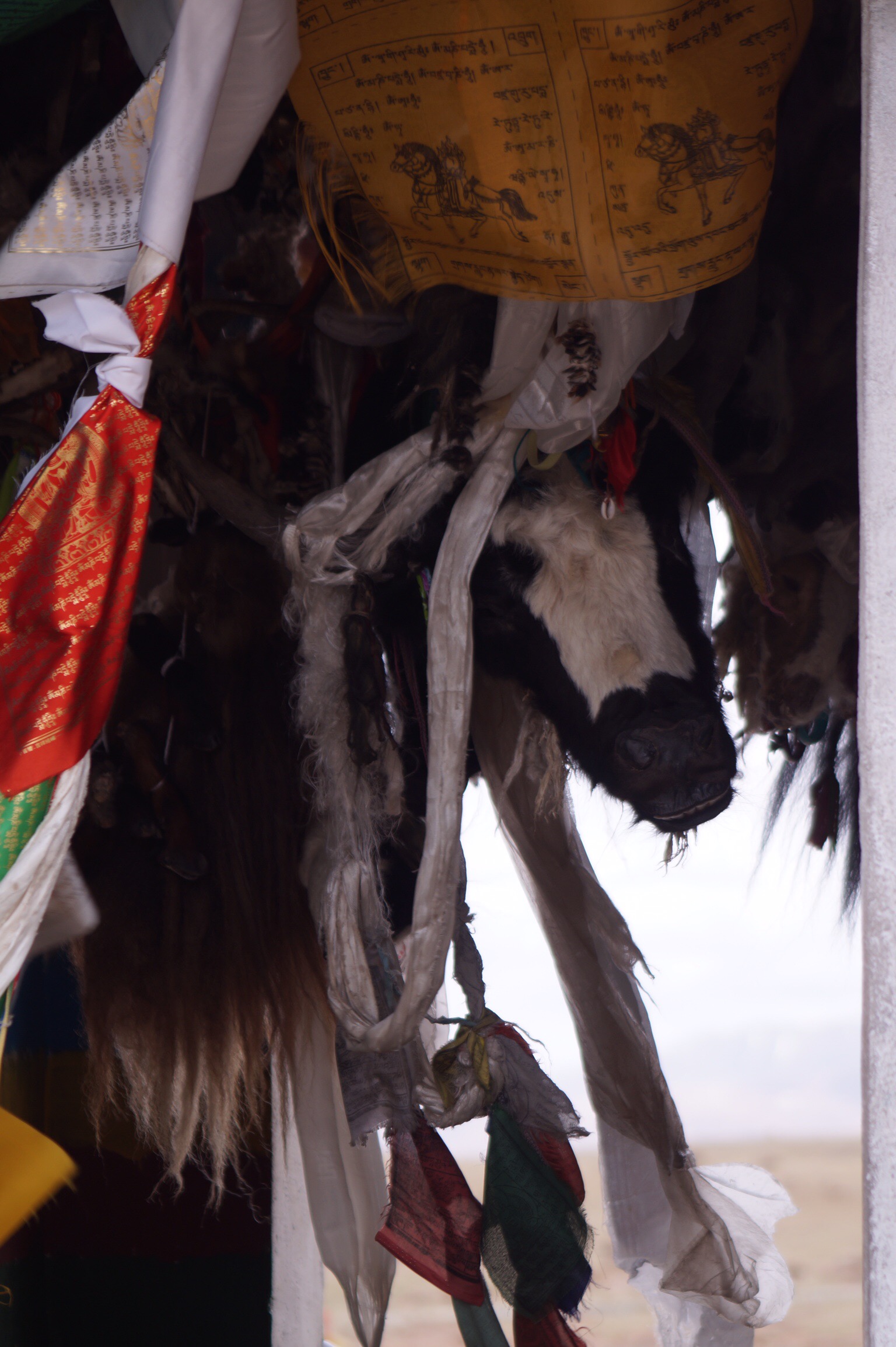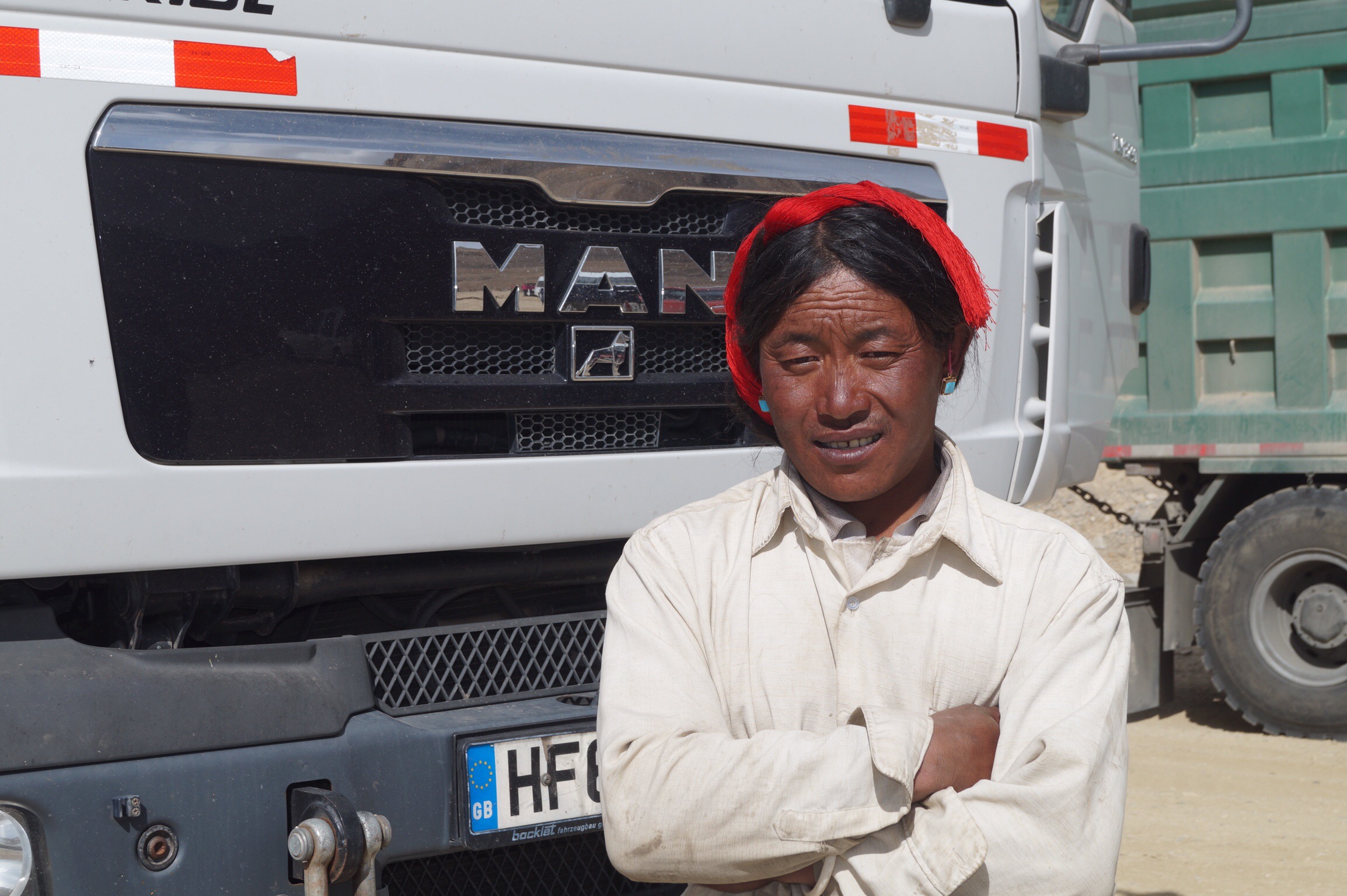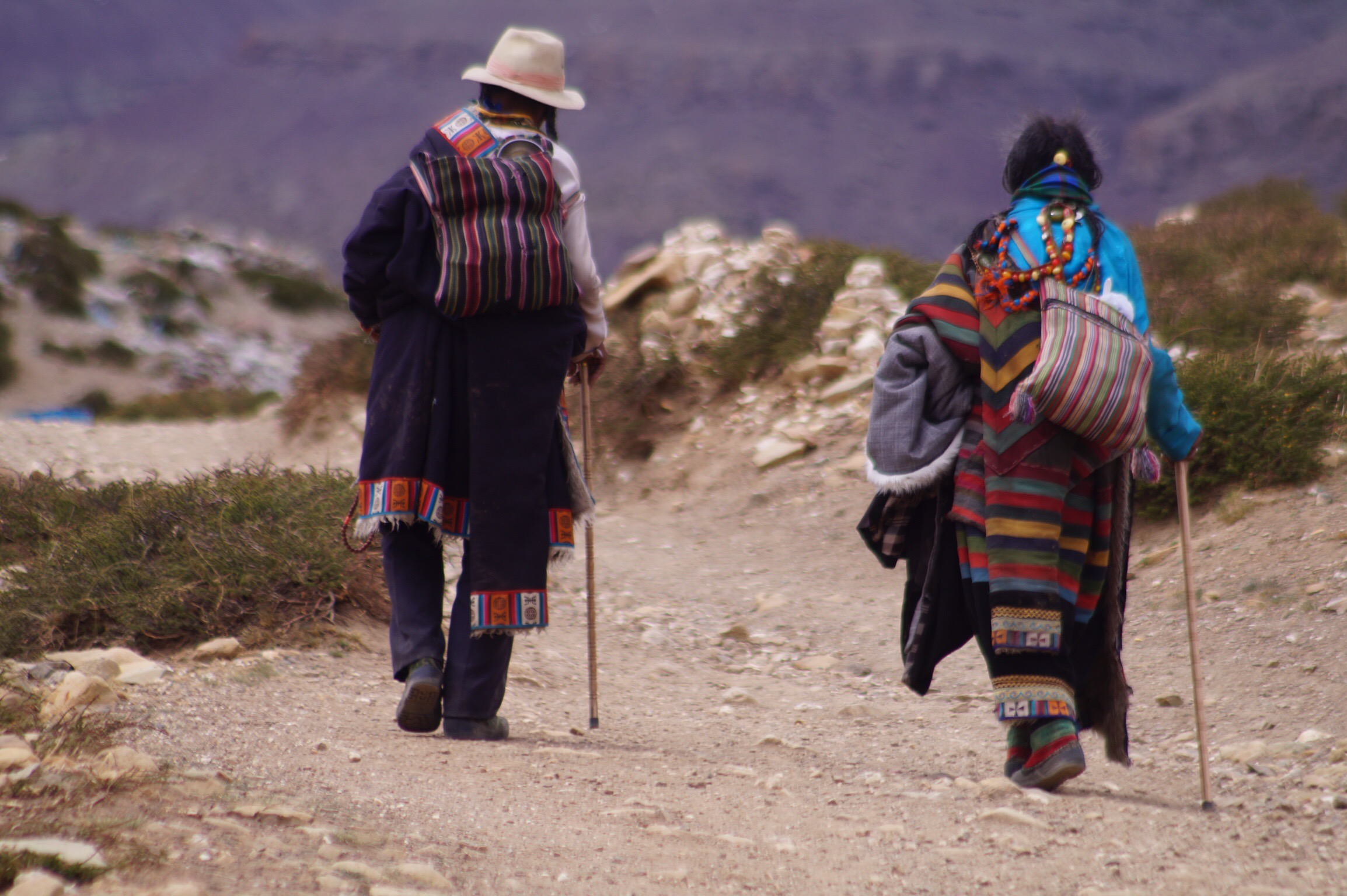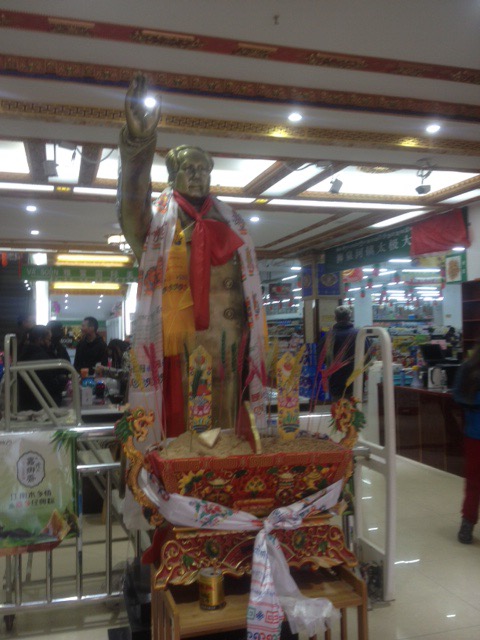It may have been the last day of May but no one had told the weather. As we headed up higher the clouds became greyer and the snow started to fall thicker and thicker.
When we had left Ali earlier that morning there had been some light sleet but that was only at 4,300m. Now we we were climbing higher and the sleet had turned to snow. We knew we had a pass ahead of us so we wondering how hard it would be snowing on the pass. Over the last week we had crossed many passes and had become blasé, if they weren't over 5,000m, they no longer constituted a pass in our minds. This one whilst just under 5,000m was looking like it was going to be a bit of a challenge.
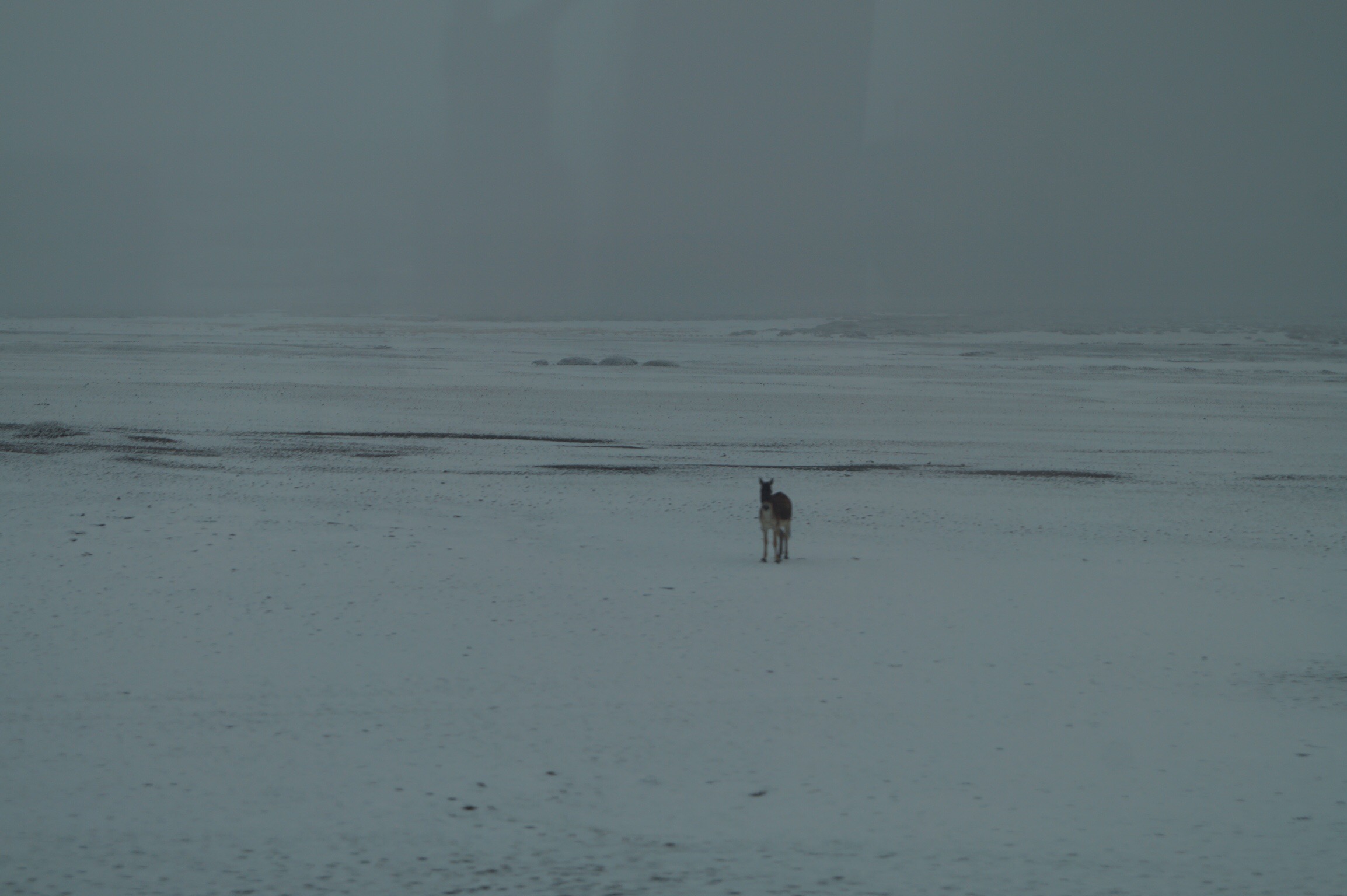

Fortunately the roads were good and a line of black asphalt stretched out in front of us. The snow lay on the ground on either side and through the clouds we could see snow clad mountains and beautiful lakes. As we wound our way further and further up the pass the black strip narrowed as the snow started to fill the road from either side. Soon there was only one lane free of snow but the pass was now in sight and we gently eased over the top. Not that it was that much of a relief as the road hardly descended on the other side. Our guide gave us the good news that much of the next 600kms or so was all above 4,700m.
The weather started to clear and we enjoyed lunch by a beautiful lake. Our stop for the night was not far away and we debated whether we should stay there or push on. The plan for the following day was for a very long drive including crossing the highest pass we would have on our whole trip first thing in the morning. As the sun was now out and the day was warming up we decided we would press on.
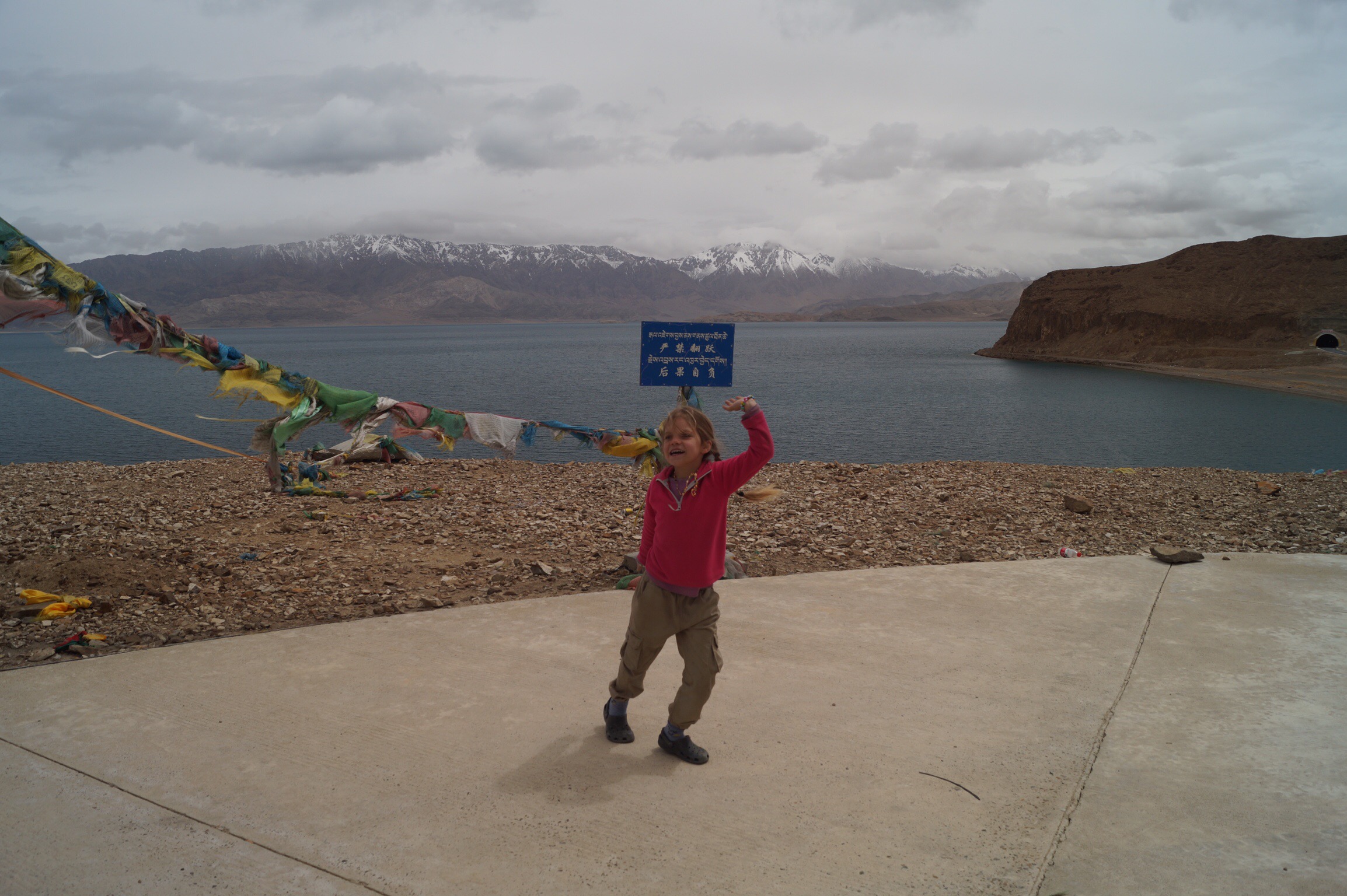

It turned into a long days drive but the scenery was stunning on the high plateau. Eventually we came to the high pass and crested it in good weather but with clouds chasing us up to the top at just a few metres short of 5,400m. With the changeable weather it proved to be a good decision. As we continued down the road we sadly said goodbye to Tibet and crossed back into Xinjiang province but it was not goodbye to the mountains.



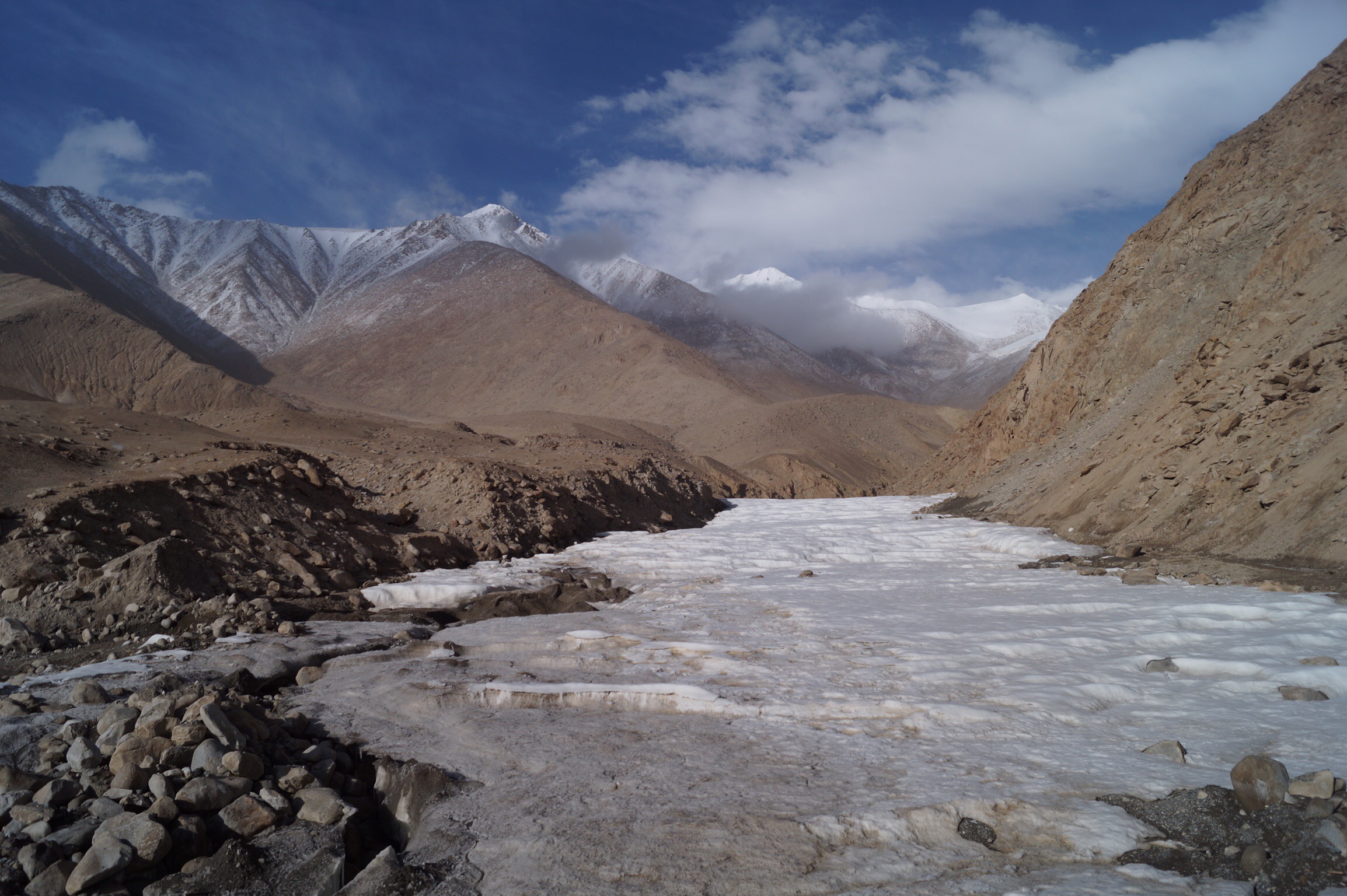
We had passed beautiful scenery and some wonderful places to camp but because of the restrictions placed on us we could not stop but instead had to stay in one of the trucking stops along the way. The contrast from the stunning scenery could not have been more stark as the only way to describe the truck stop we pulled into for the night was a "s**t hole". The only saving grace was that we could sleep in our truck parked out of the way with the rubbish behind the grim guest house.
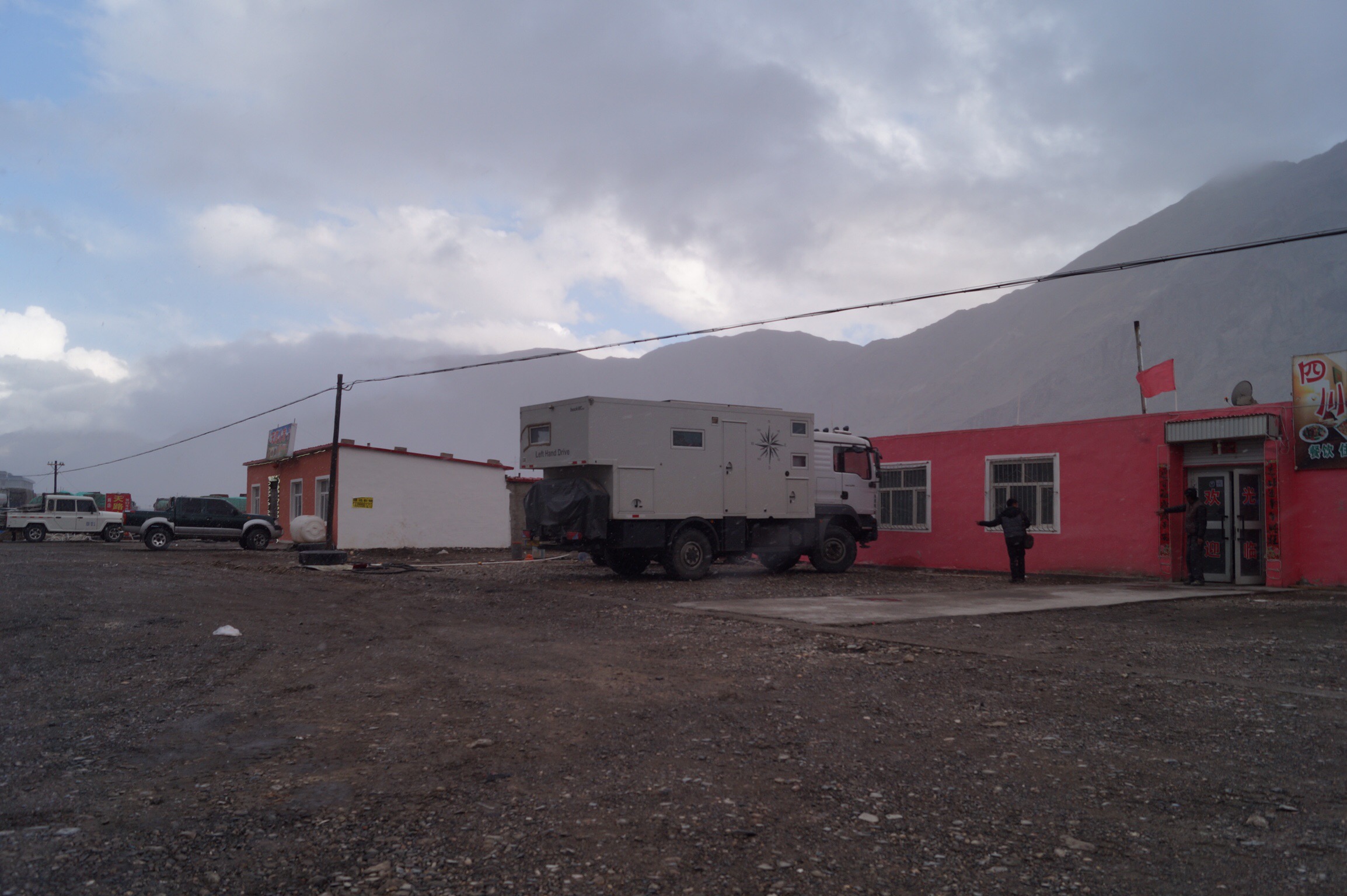
As we settled in for the night it started to snow. We hoped we weren't going to be snowed in here. We were in luck, we awoke the next morning to glorious sunshine and headed out on the highway again to stunning views of the mountains freshly covered in snow set against a combination of blue sky and the wispy clouds. As we headed up the next 5,000m plus pass the clouds closed in but the pass wasn't a problem and we could enjoy the views. Again after such brilliant scenery it was a shock to see the state of the tiny truck stop where we were staying for the night. It started to make the one from the previous night seem not too bad.
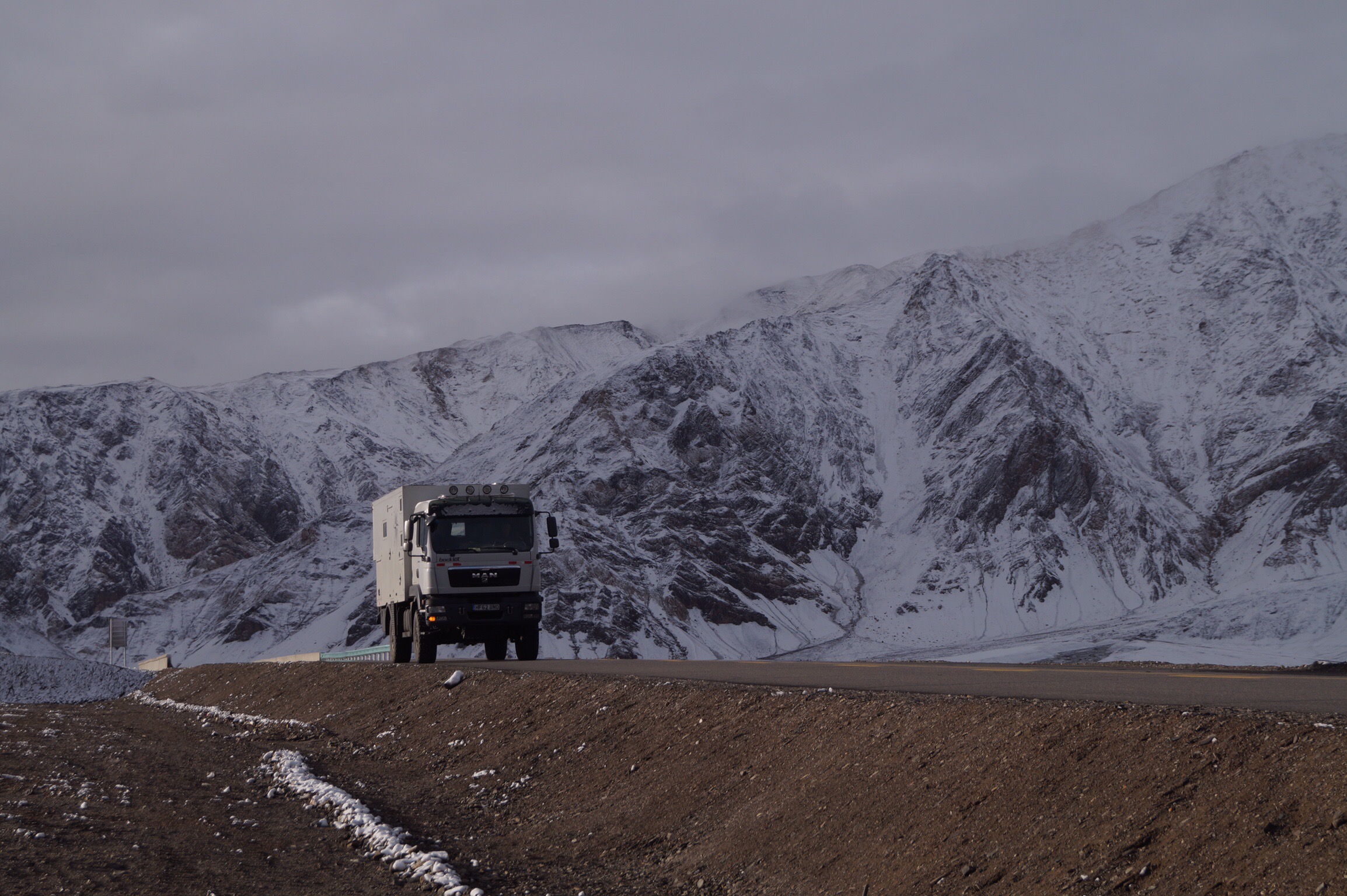
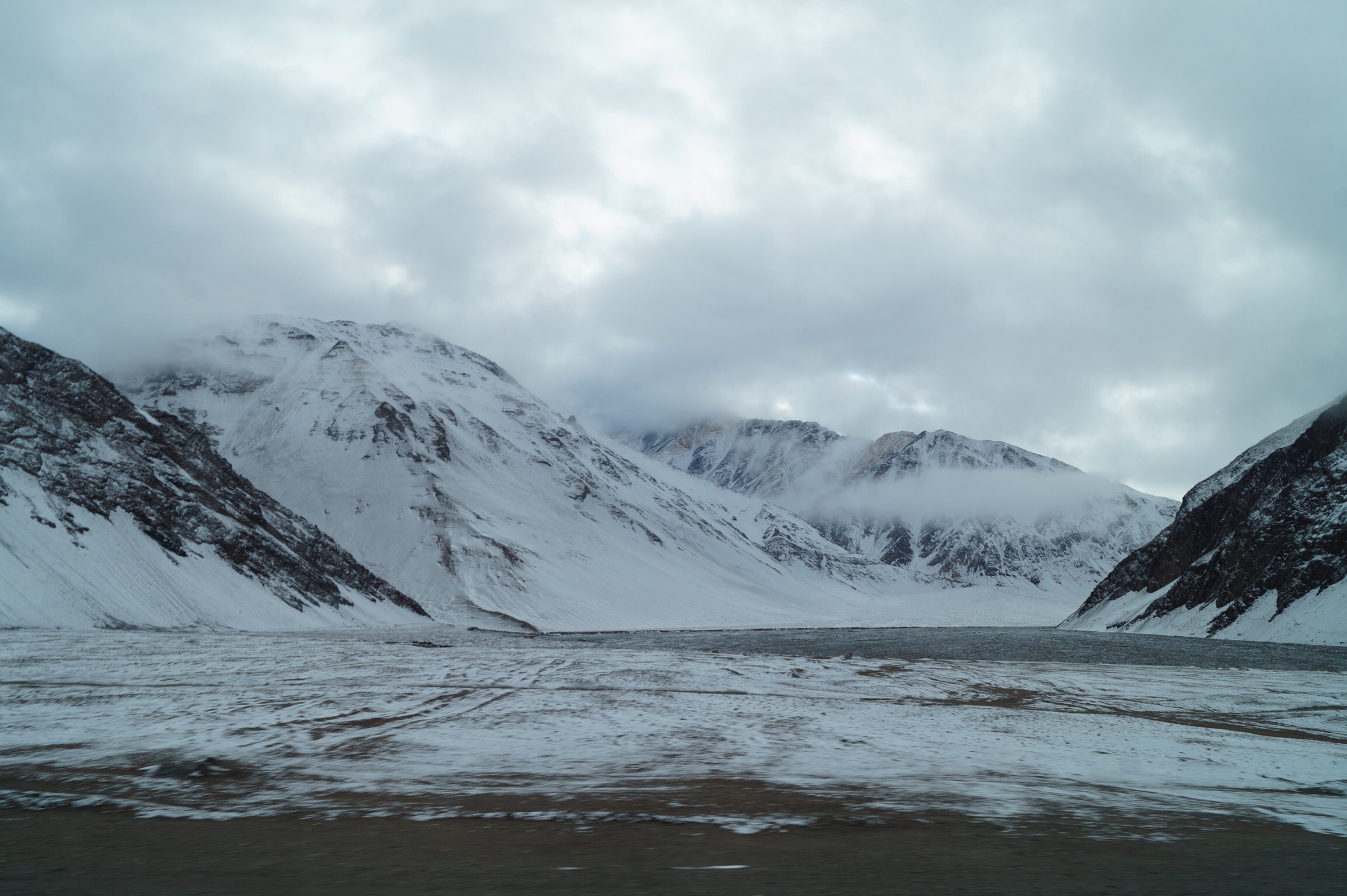
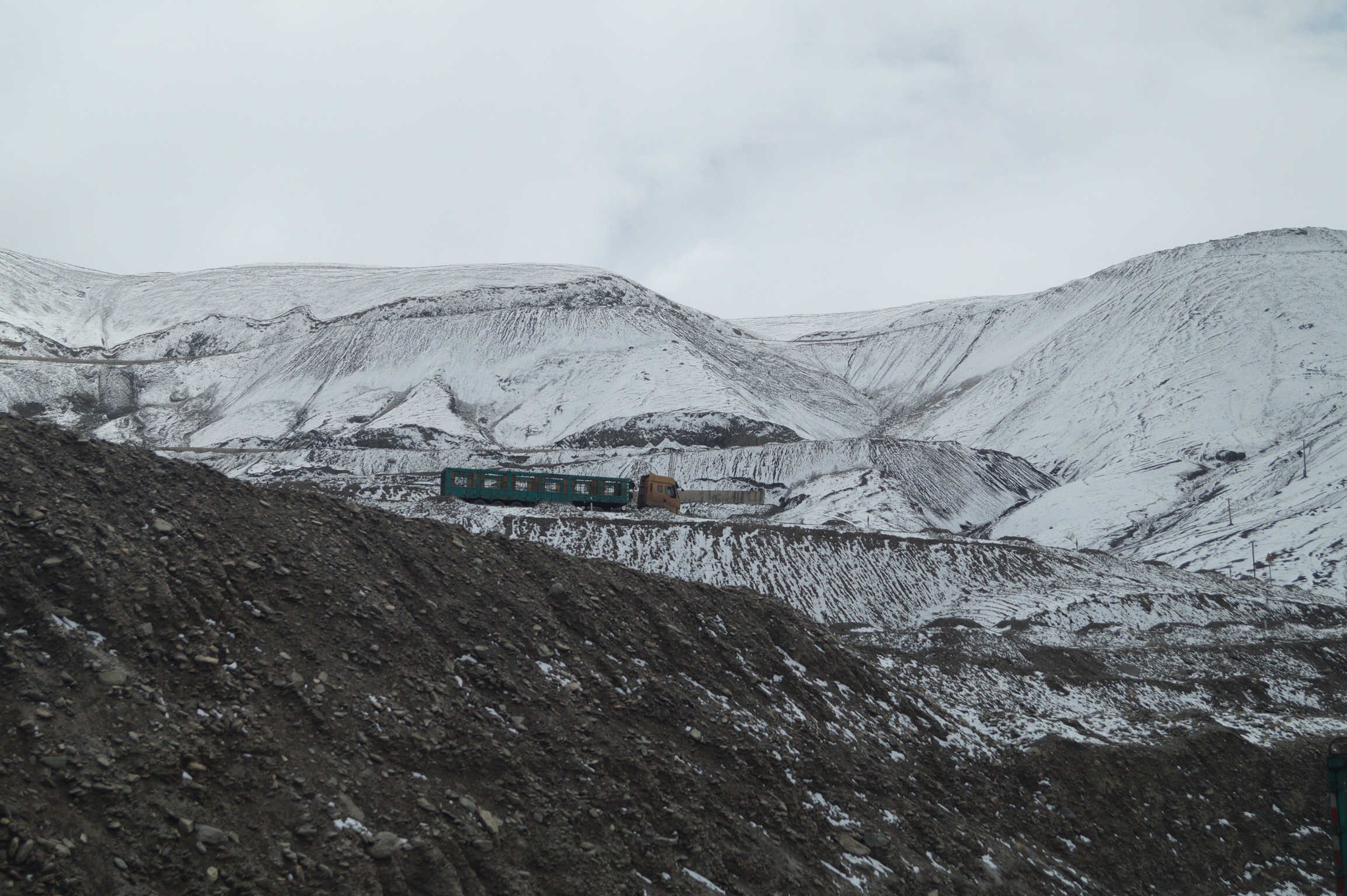
The next day was going to be our last day in the mountains and although the passes were below 5,000m they were still to prove challenging. Fresh snow had fallen and the temperature had dropped below freezing so as we headed up first thing in the morning the road was icy. We carefully wound our way up the pass to be rewarded with fantastic views on reaching the pass.
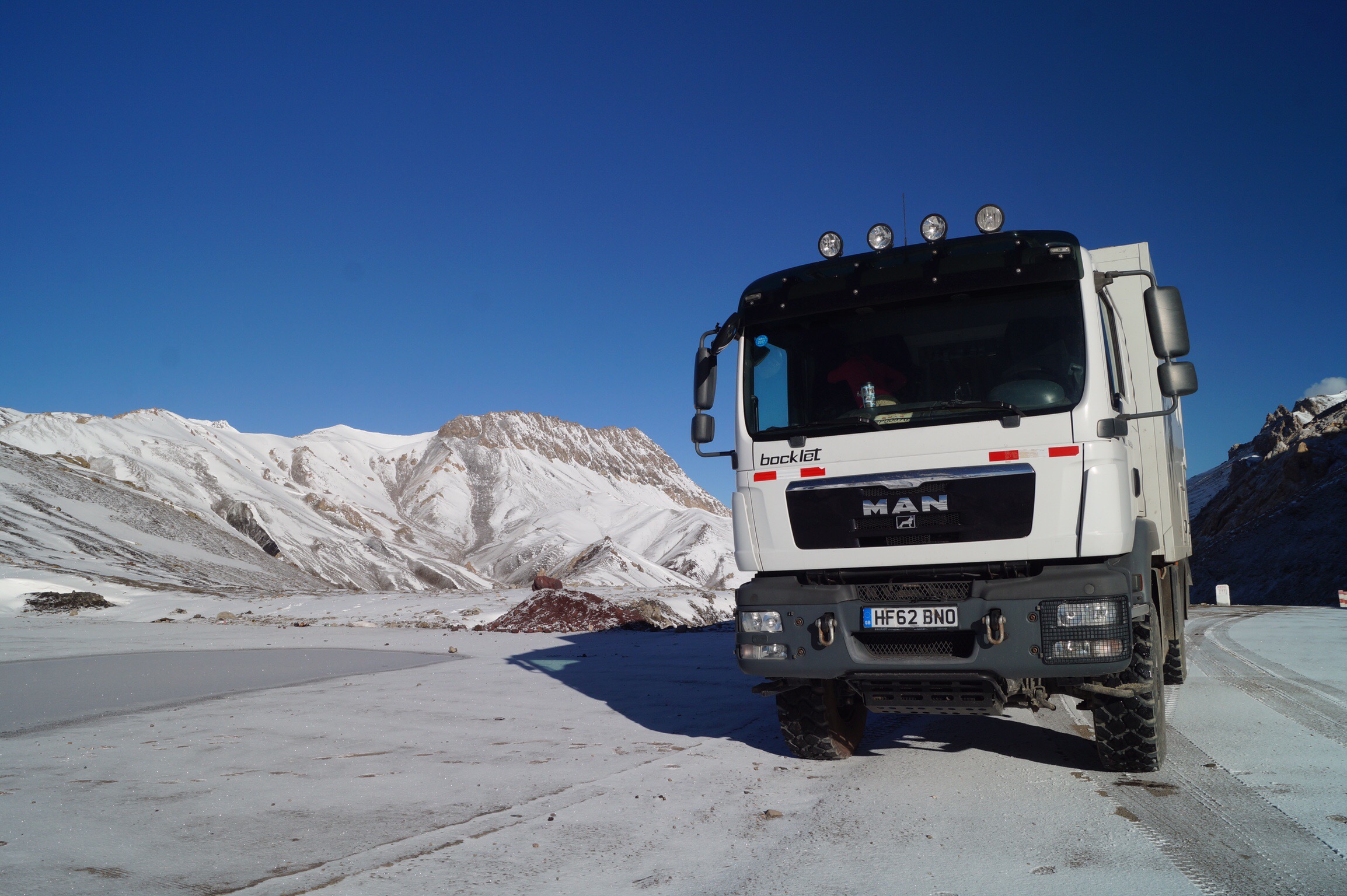
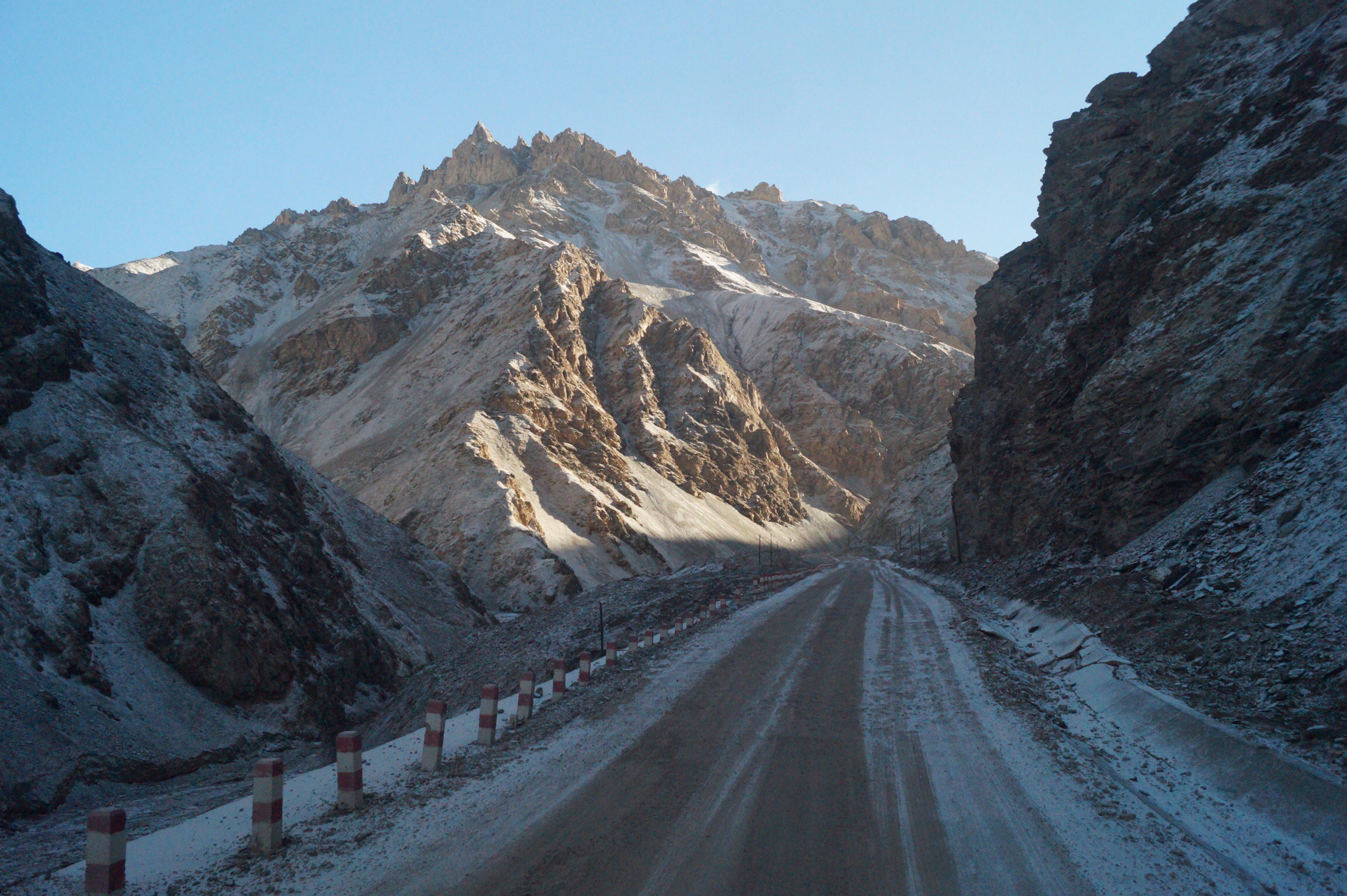

Heading down through a narrow gorge we could tell we were getting lower as it started to warm up and we even started to see trees again. We could also tell we were back in the police state of Xinjiang as the police checks became more officious. And then as we descended from the last smallish pass we were back in the desert. The change was quite abrupt and it was only a short drive back to Kargalik where we had been a few weeks ago. Our drive across the roof of the world was complete.



Not that our Chinese experience was over. Our evening in Kargalik was to prove that. We had checked into the hotel where we had stayed during our previous visit and were just enjoying our first hot showers in a long time when the guide rang. He was at the police station where we needed to be registered and they were now saying we could not stay in the hotel and also could not stay in the town, even though it was on our permit, and needed to leave in 30 minutes. No explanation was given as to why, we just couldn't stay.
We suspected it may have been because it was a Friday (Muslim prayer day) but never found out. We weren't going to rush, continued to have our showers and I even popped to the shops to buy the next day's lunch. We could see the traffic been stopped and now we could not leave the hotel. As we watched to see what was happening we could see 4 platoons of police been marched down the street in riot gear. The staff of the hotel tried to usher us back inside but this was too interesting to miss, so I continued to watch. I asked one of the local policemen if there was anything wrong and what was going on. He just shrugged and said everything was normal. We never did find out what was happening. I suspect nothing and it was just the police having a show of force for the benefit of the local population.
Anyway we still had to leave and after the police left, we drove 40kms to another town. We now had to find a hotel that would take foreigners. Whilst the guide was busy investigating two policemen arrived on a motorbike, soon to be followed by two police cars and a heavily armed group from the army. Just how many people does it take to make sure the tourists are behaving themselves?
They were desperate that we had to go to the police station to register and weren't too impressed when I explained we hadn't decided whether we were staying yet. In the end I said we would leave and they said they would escort us out of town. Half way out I stopped and explained we wanted to get dinner. Over dinner we decided it was too late to drive to Kashgar so we headed back into town only to be quickly surrounded by the police again. Do you think they had misheard when we had told them we were tourists not....?
Parking a short way from the hotel they then insisted we had to go to the police station to register. At this point I lost it and told them what I thought of their policy of harassing tourists. They insisted we went to the police station and I told them the only way I was going is if they arrested me. Yelling seemed to have an affect as a number of them slunk off and the rest followed us to the hotel where in the end they were happy to take photocopies of our passports. I felt for our poor guide who was caught in the middle and kept cool throughout.
The next day was a straightforward drive back to Kashgar. I nearly missed the hotel we were staying at though as the armoured personnel carrier was no longer there to guide me. In fact the whole city seemed to be a bit more relaxed than last time although there were still an astounding amount of police on the streets.
As it was Ramadan we were a little concerned about whether we would be able to eat in the evening especially as it was light until nearly 11pm. We needn't have worried, heading out that night there was a street market selling all kind of goodies and the cafes behind them were grilling kebabs as usual. We later found out that the Chinese government had mandated that all cafes and restaurants had to stay open as usual and if they closed for Ramadan they would be closed for good!
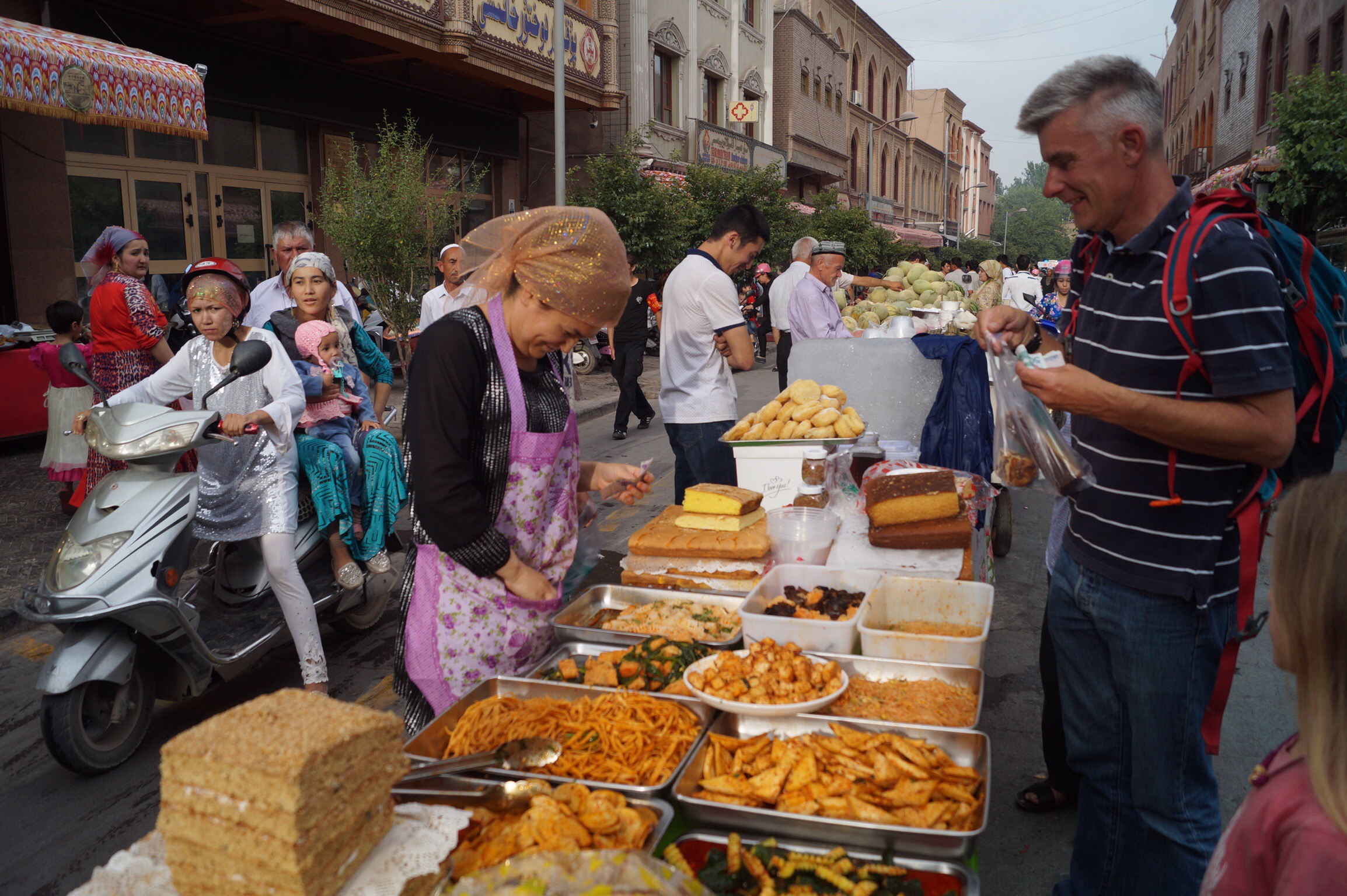

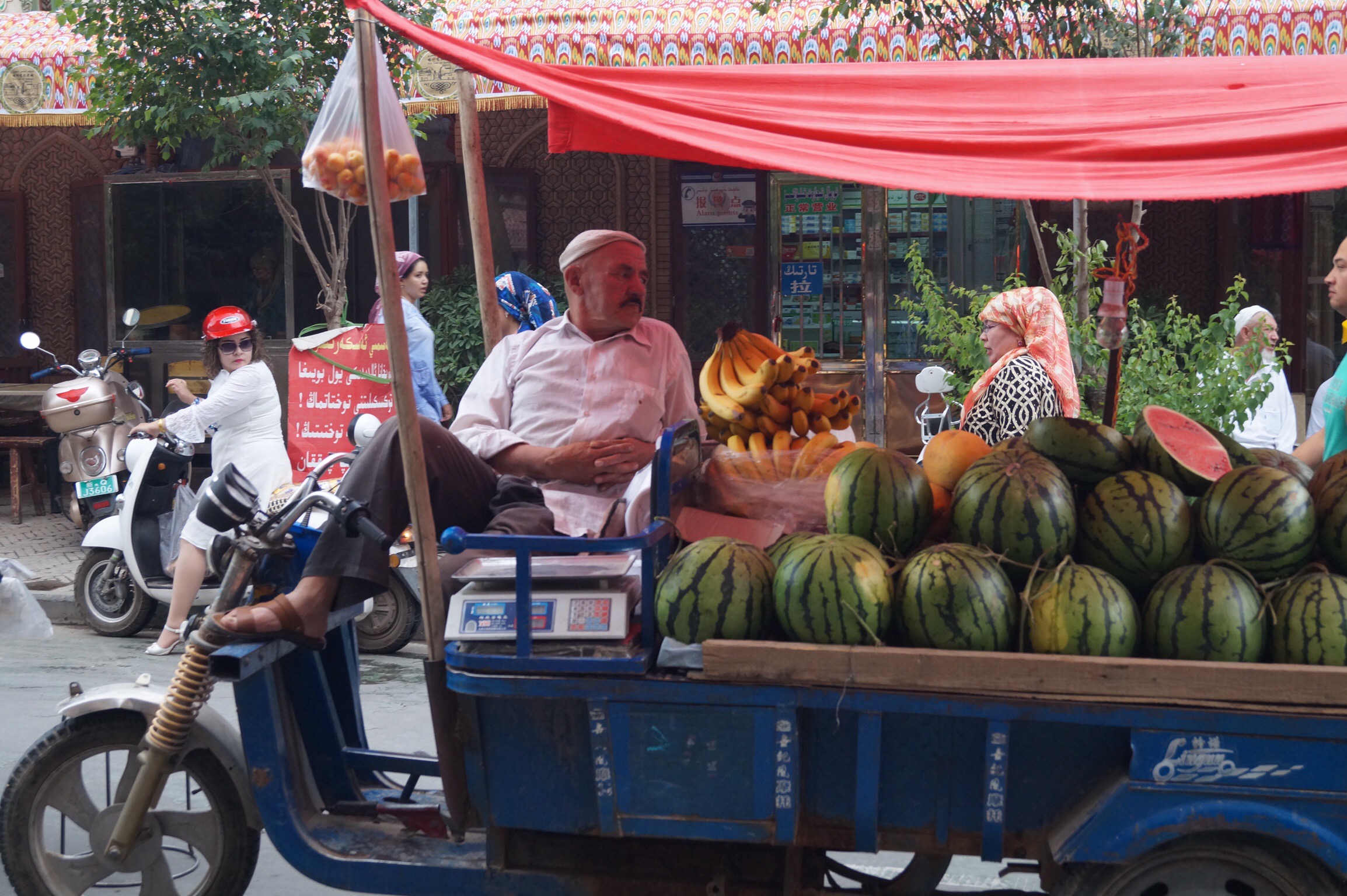
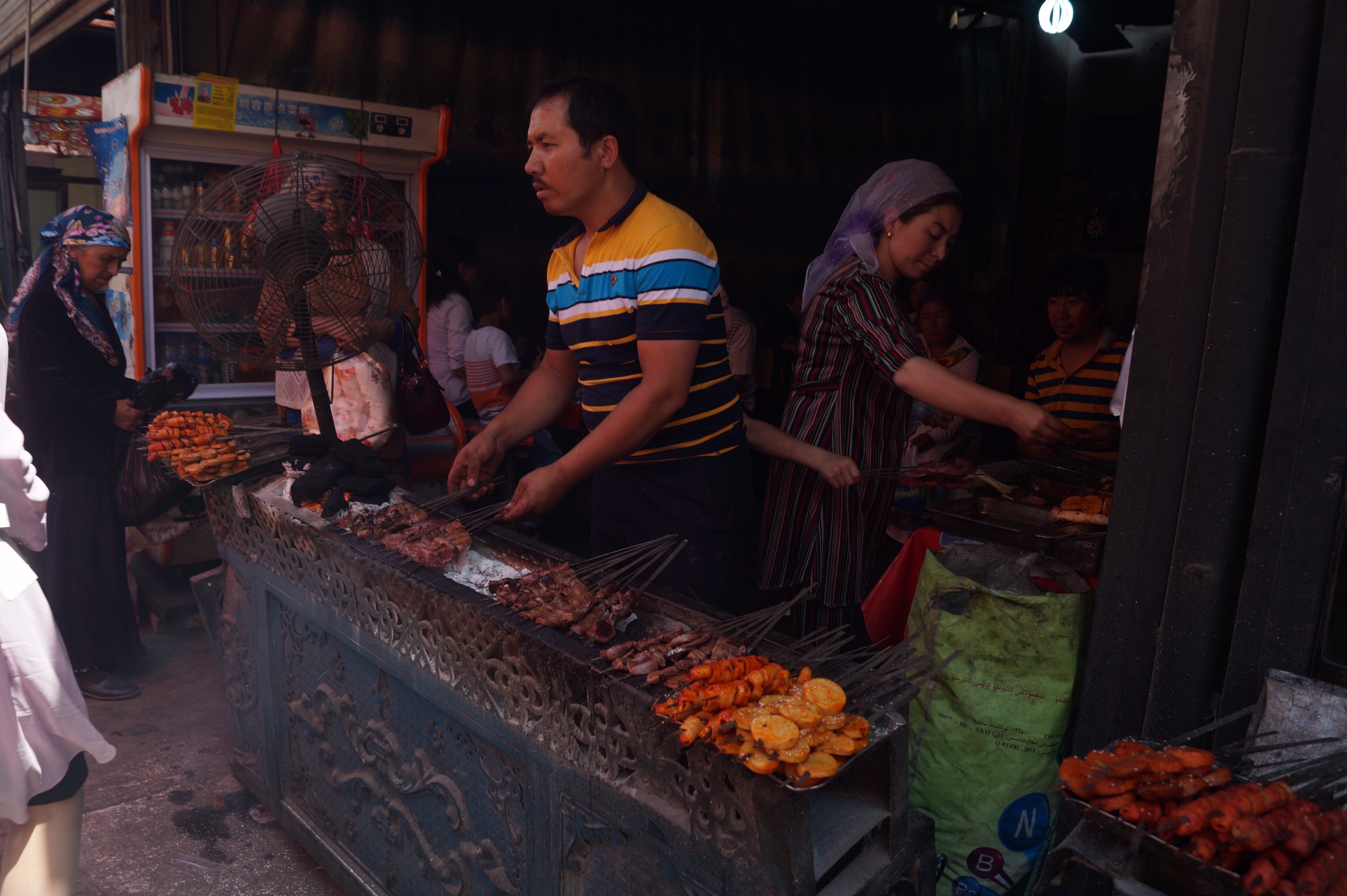
Mind you not everything looked that appetising.
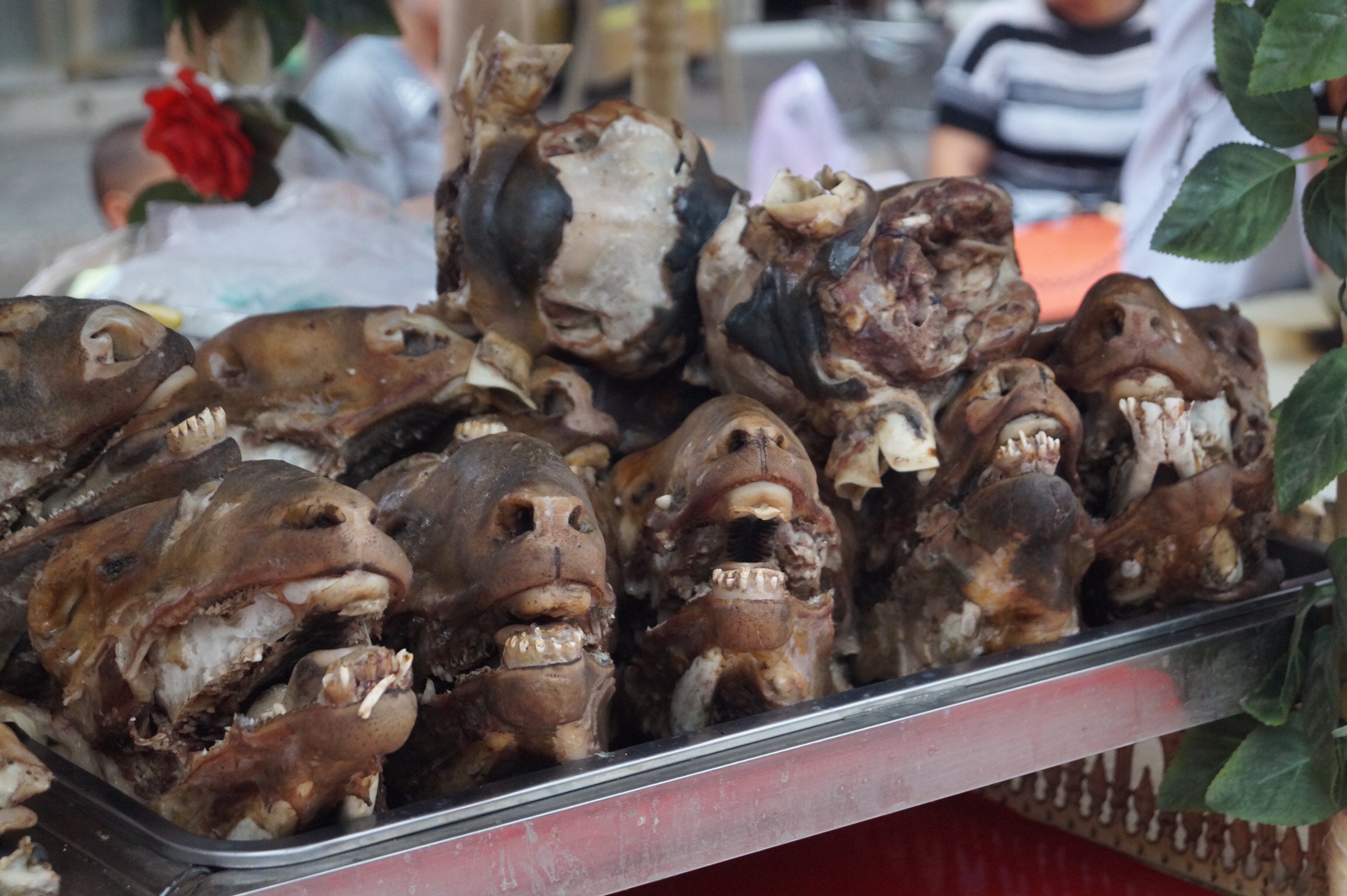
We were in Kashgar for a couple of days and it was good to have a break from all the driving we had been doing. We had also timed our arrival for the famous Sunday markets. First up was the livestock market, this was where the farmers from the surrounding countryside came to sell their livestock to other farmers and to the local restaurants and shops.
When we arrived vehicles were arriving loaded with cows, sheep and goats as well as the odd horse and camel. We wandered around the pens admiring the fat bottomed sheep and watching some of them been shaved the old way with a big pair of scissors. The local men in their Uighur hats were busy sizing up the animals and in deep discussion over what to purchase.
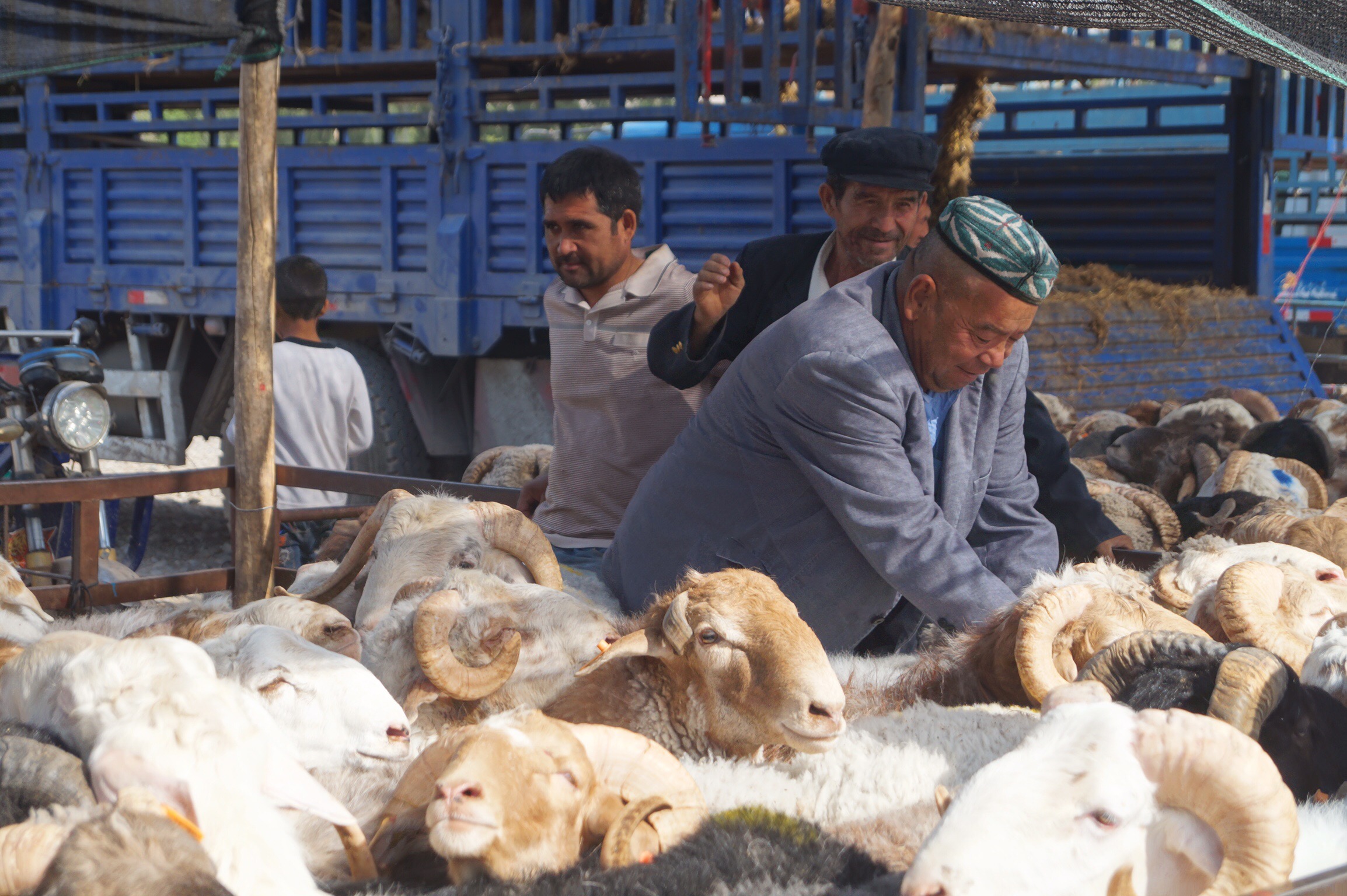
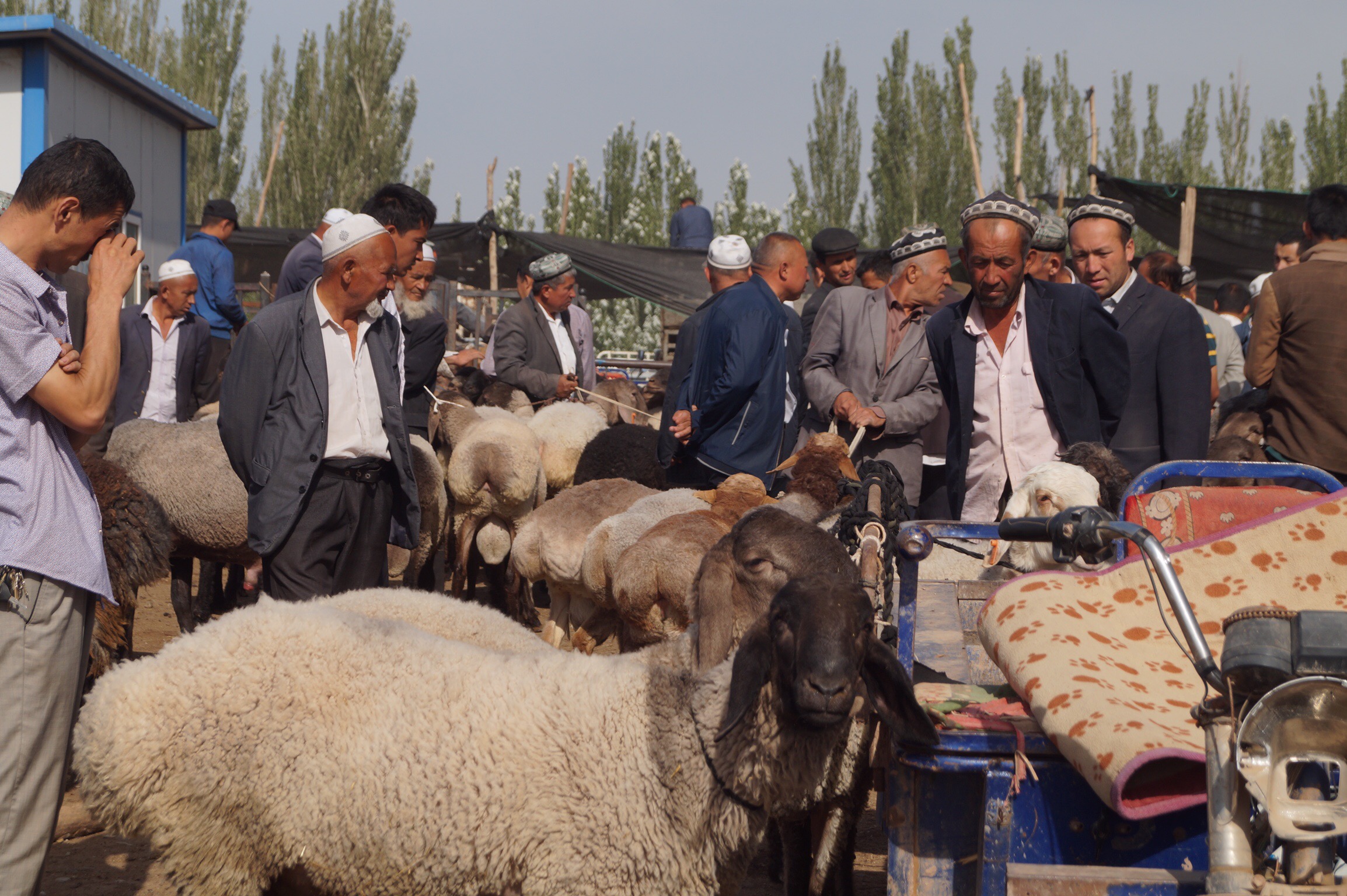
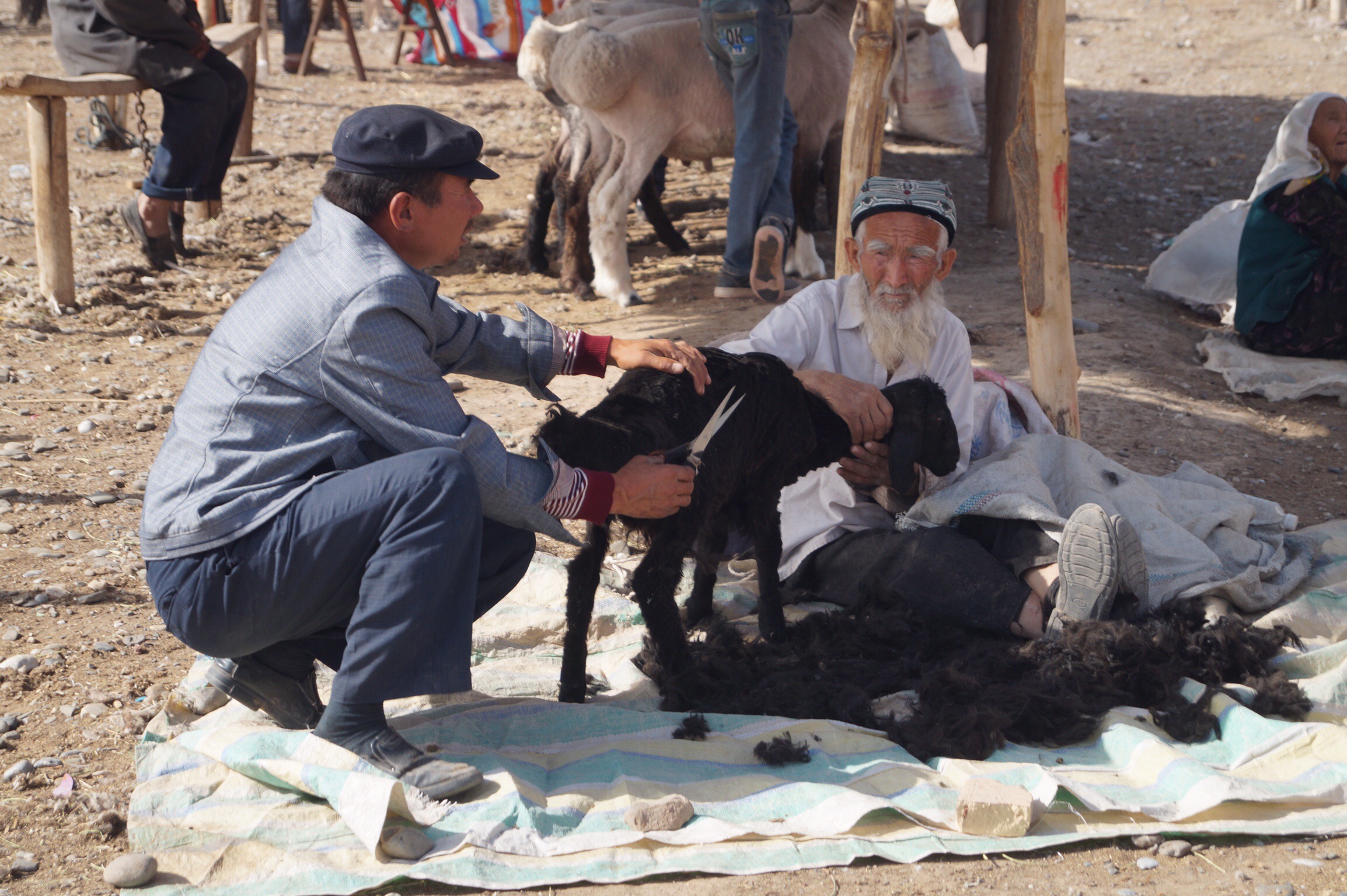

As we came back to the entrance of the market we could see some of what was to become of these animals. There the sheep had not just lost their woolly coats but also their heads and the carcasses were strung up for all to see.

From there we headed to the less dramatic more everyday market where household goods were sold. We had heard that this was an amazing market but too be honest we were rather underwhelmed by it. It just seemed like any other market selling clothes, household goods, nuts, dried fruits, carpets etc.
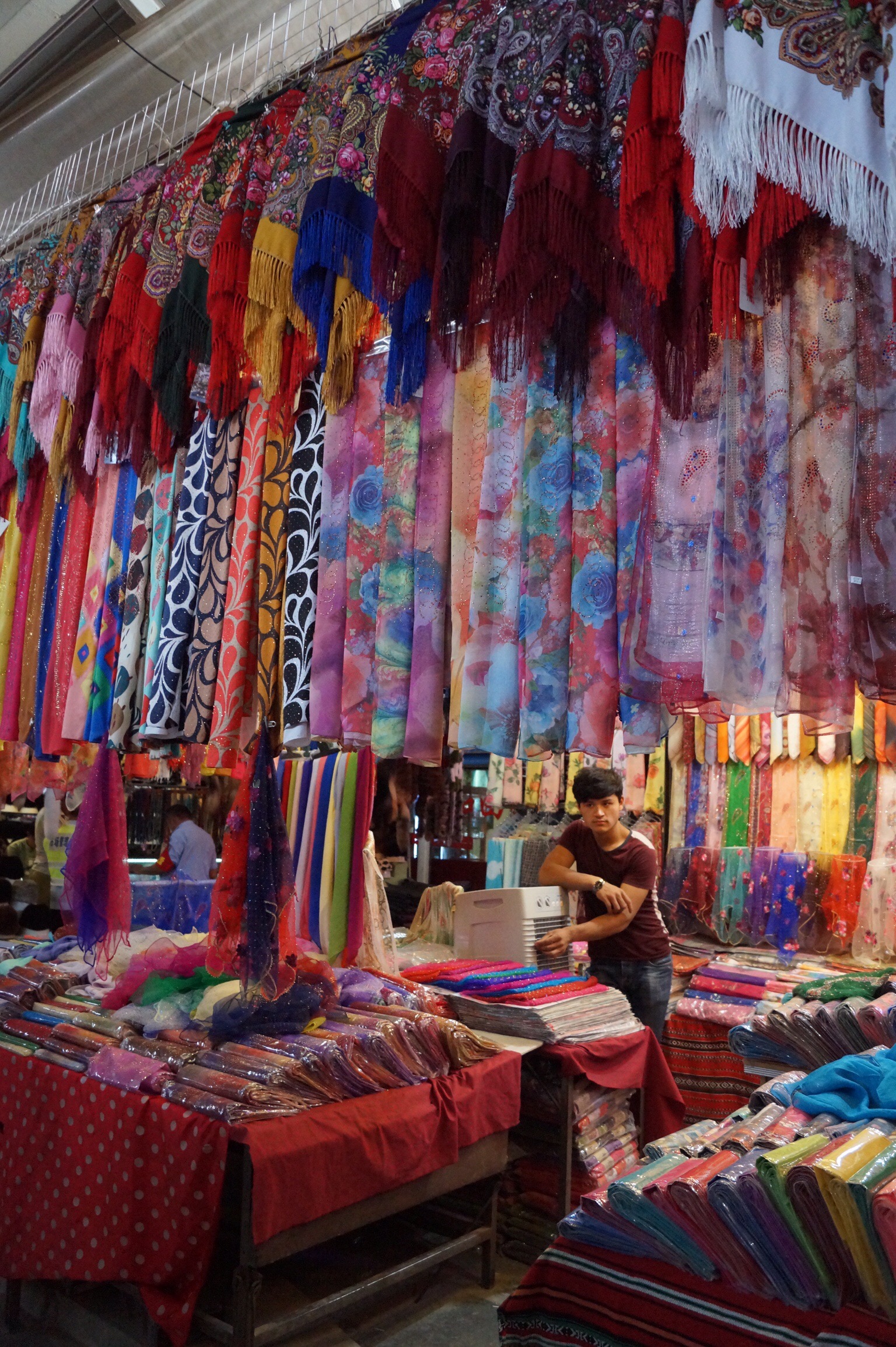
We also took time to visit the Abakan Hoja Mausoleum which was built by a family that ruled the region in the 17th and 18th century. It's considered one of the holiest Muslim sites in Xinjiang and is a beautiful piece of Islamic architecture. Kashgar already had much more of a feel of Central Asia than China and this mausoleum certainly was a foretaste of what we would be seeing as we headed towards Central Asia.
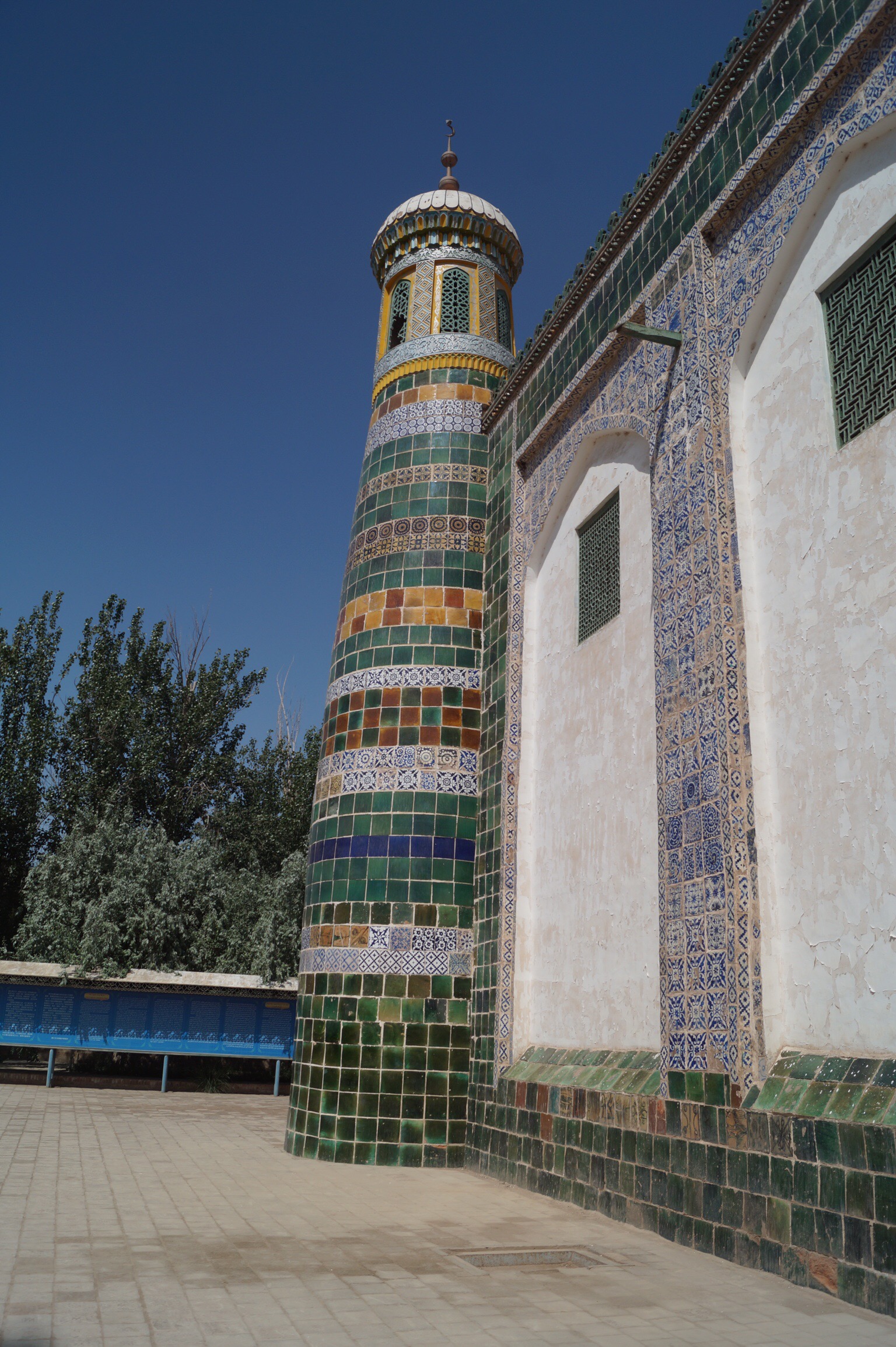
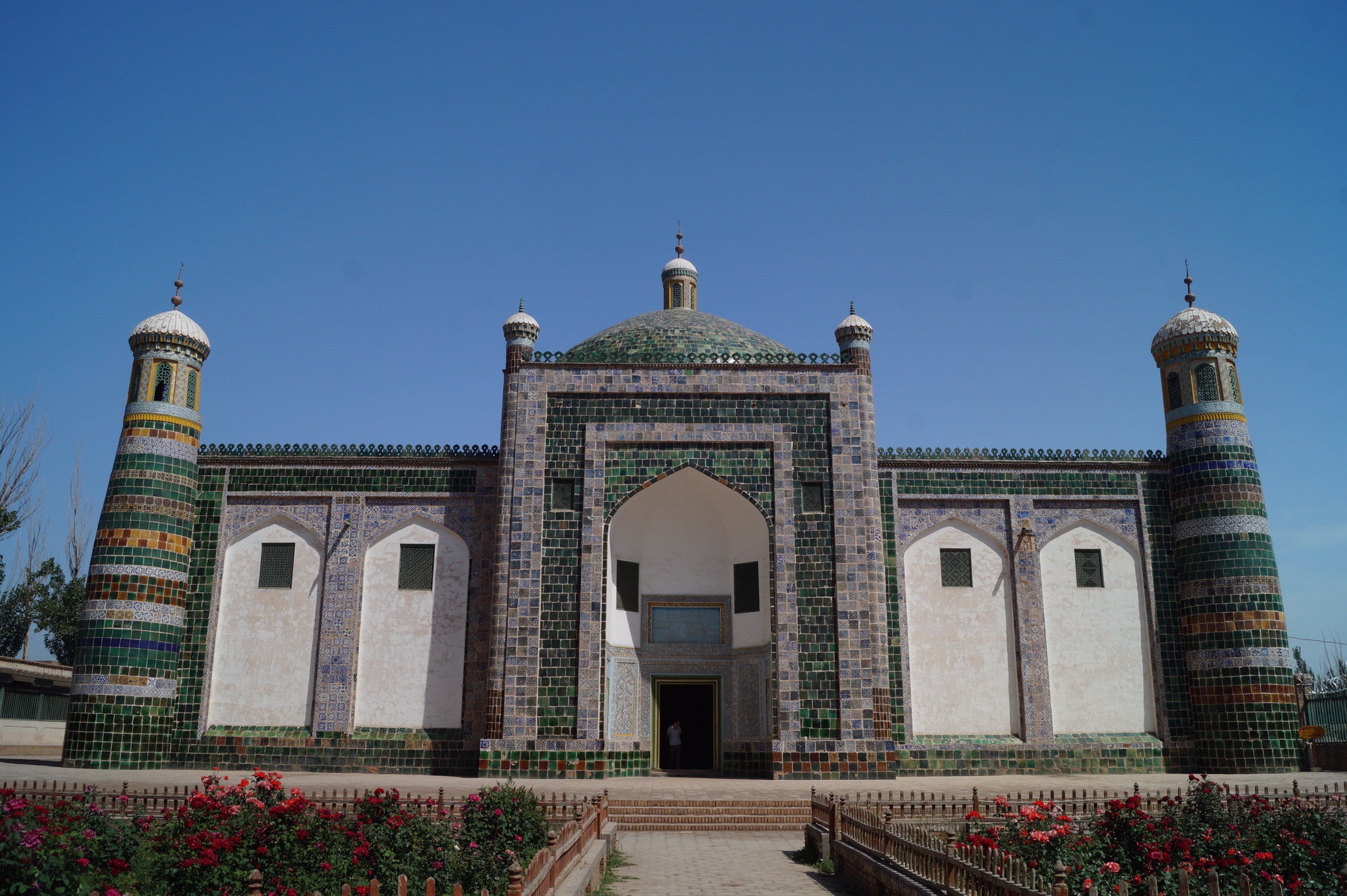
Finally it was time to relax before we headed to the border. To the wilds of Central Asia and freedom!
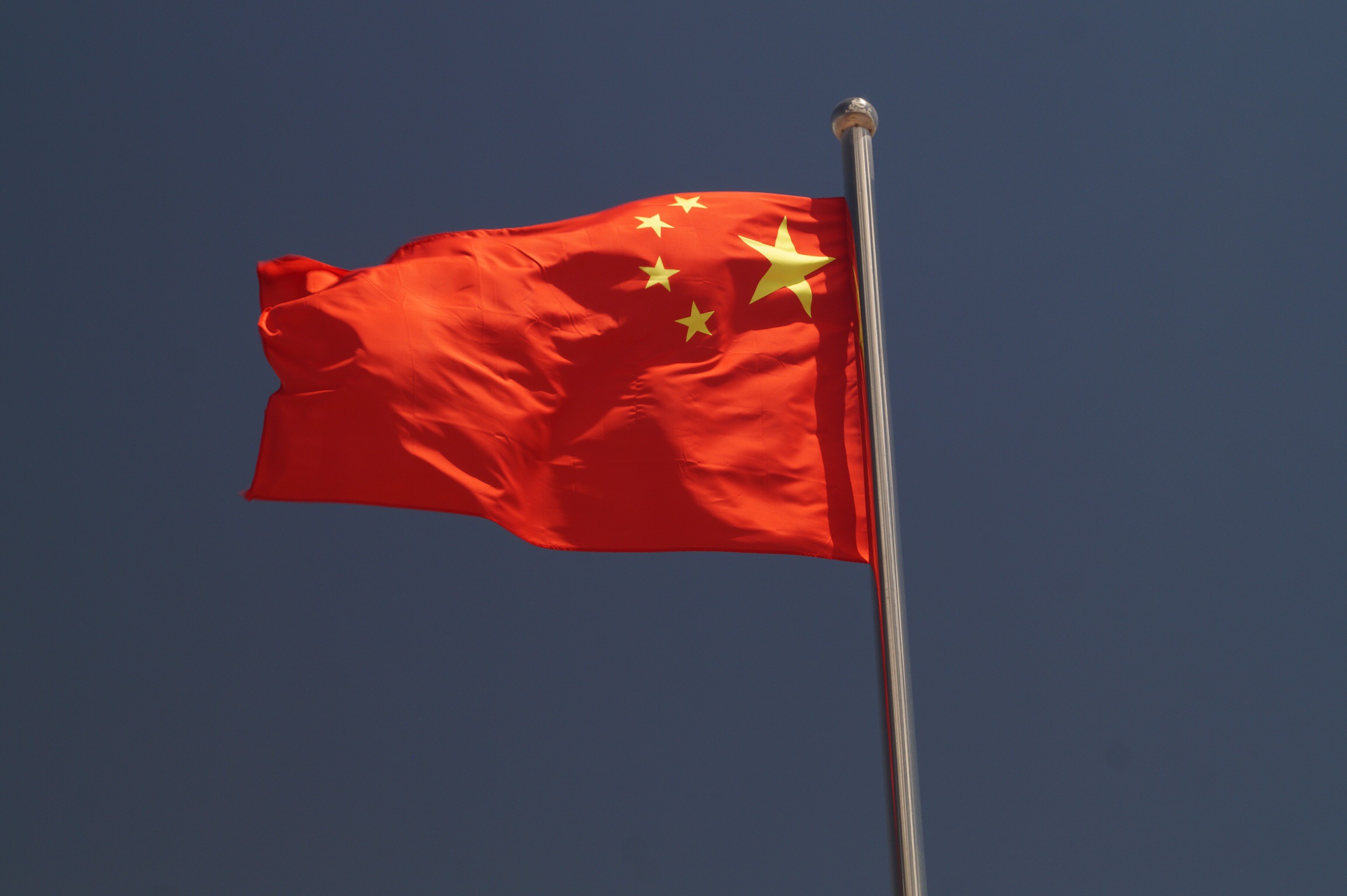 Lucy
We entered China a month ago but me, Alisha and mummy had to wait two days for Daddy to arrive with the truck from the border. We left to go to Tibet and had to have guides all the way. We all got a bit sick from the altitude but we soon adjusted.
We went to see the Potala Palace it was very very big and there were lots of thrones for the Dalia Lama. We also went to Everest Base Camp where there was a great view of Everest.
Lucy
We entered China a month ago but me, Alisha and mummy had to wait two days for Daddy to arrive with the truck from the border. We left to go to Tibet and had to have guides all the way. We all got a bit sick from the altitude but we soon adjusted.
We went to see the Potala Palace it was very very big and there were lots of thrones for the Dalia Lama. We also went to Everest Base Camp where there was a great view of Everest.
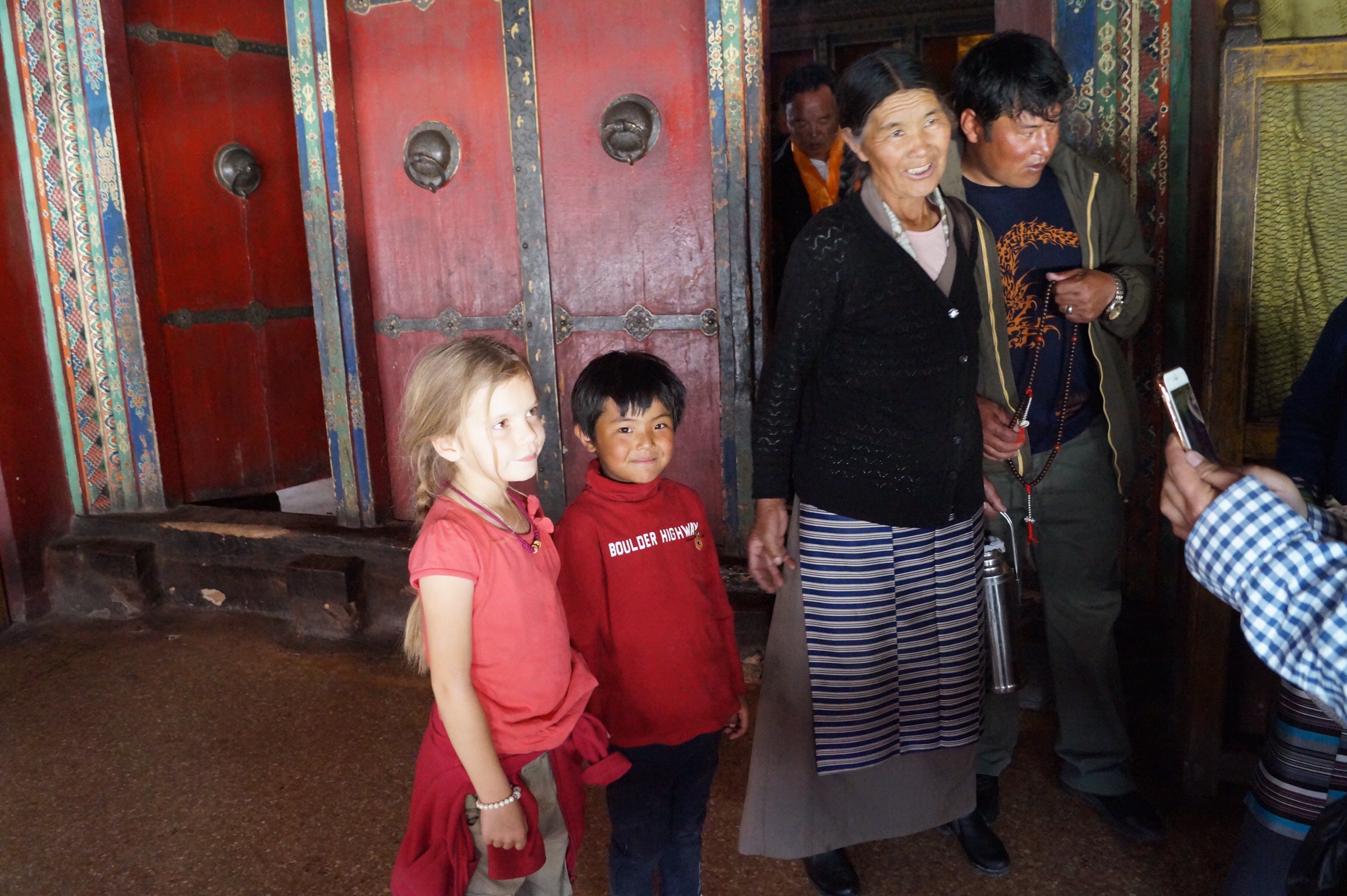 When we arrived in Kashgar we went to see the animal market, there were goats, cows,sheep, horses and donkeys and just as we were leaving camels came in.
When we arrived in Kashgar we went to see the animal market, there were goats, cows,sheep, horses and donkeys and just as we were leaving camels came in.
 The best part of the trip was the beautiful mountains and no matter how difficult the day was I could always see a lovely mountain even if it was just in my mind's eye.
Alisha
I liked China although we didn't see much of it. It would take you years to see all of it and to be honest I'm not sure Daddy would be able to cope with guides the whole way. We did a really long drive to get to Tibet as we had guides the whole way. I had to go and sit in the back which I soon got used to.
When we got to altitude all the sealed food puffed up. Some of the stuff got so puffed it took up all the space as soon as we got down though every thing puffed down and caved in.
The best part of the trip was the beautiful mountains and no matter how difficult the day was I could always see a lovely mountain even if it was just in my mind's eye.
Alisha
I liked China although we didn't see much of it. It would take you years to see all of it and to be honest I'm not sure Daddy would be able to cope with guides the whole way. We did a really long drive to get to Tibet as we had guides the whole way. I had to go and sit in the back which I soon got used to.
When we got to altitude all the sealed food puffed up. Some of the stuff got so puffed it took up all the space as soon as we got down though every thing puffed down and caved in.
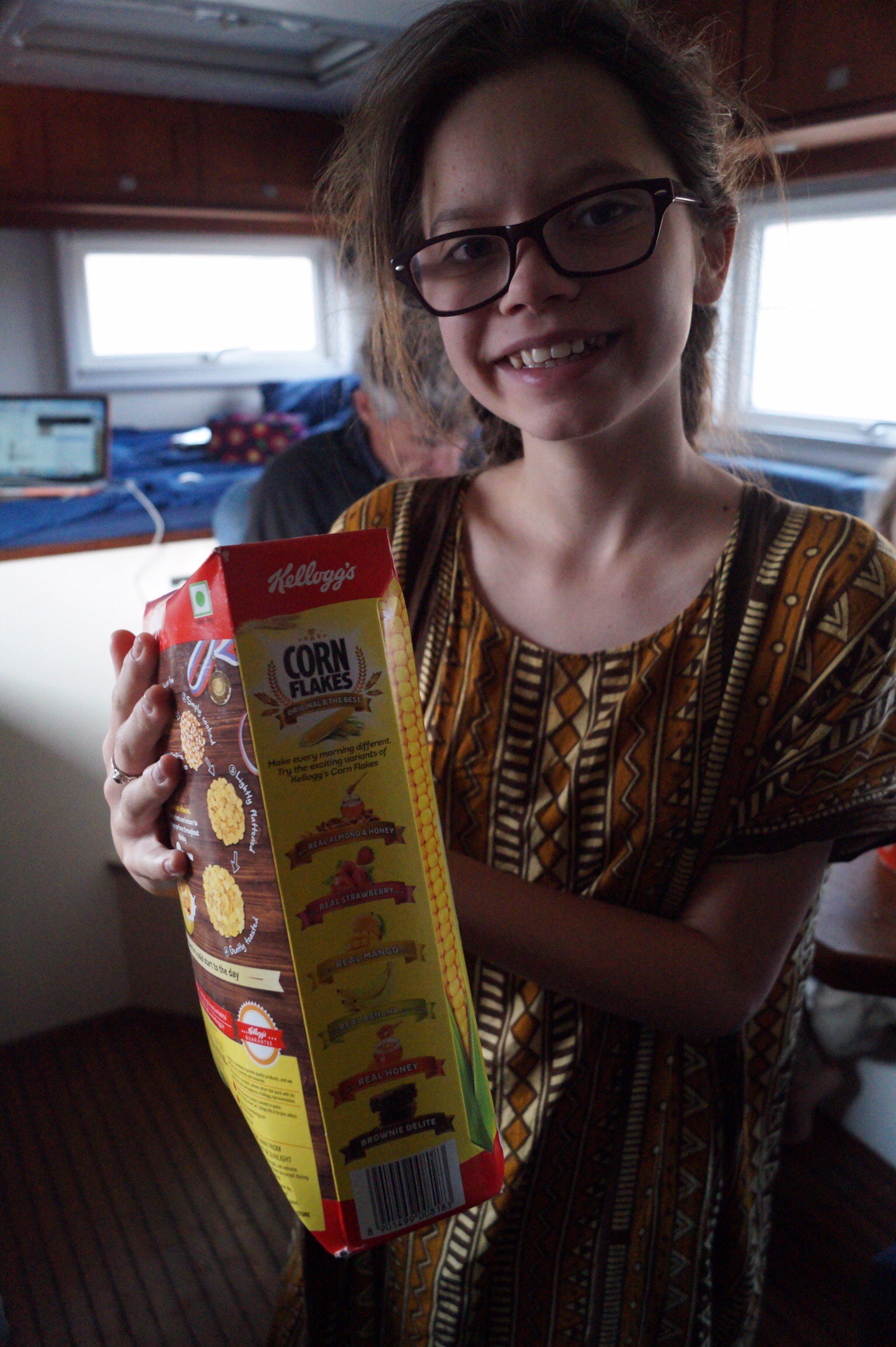 In Tibet there was a lot of yak butter lamps me and Lucy joked that they smelled of cauliflower cheese, it got a bit overpowering in the Jokhang temple.
In Tibet there was a lot of yak butter lamps me and Lucy joked that they smelled of cauliflower cheese, it got a bit overpowering in the Jokhang temple.
 I really enjoyed seeing the Potala Palace as well as the high mountain scenery and it was really cool (literally) to see Everest so close up.
Gilly
Having come from such a privileged country, I have to say I had rather taken democracy for granted. However after a month in Xinjiang and the Tibetan Autonomous Region, I will never take it for granted again. Kashgar felt like, how I imagine, a city under occupation would feel. There were police posts on every corner; our hotel had an army personal carrier primed and standing to attention outside; there were passport and bag searches to go into shops; heavily armed policemen standing alert in groups all facing outwards ready for action while people tried to go about their normal business around them; and citizens armed with clubs and nasty multi-spiked metal spears doing aggressive drills while being checked by the police. We saw multiple shows of force by the army and police throughout Xinjiang, all the traffic would be stopped and armoured cars; troop carriers bristling with machine guns rode around town with sirens blazing; and battalions of police dressed for battle with machine guns, riot shields and helmets faces hard matched through the streets ready to battle with an invisible enemy.
I really enjoyed seeing the Potala Palace as well as the high mountain scenery and it was really cool (literally) to see Everest so close up.
Gilly
Having come from such a privileged country, I have to say I had rather taken democracy for granted. However after a month in Xinjiang and the Tibetan Autonomous Region, I will never take it for granted again. Kashgar felt like, how I imagine, a city under occupation would feel. There were police posts on every corner; our hotel had an army personal carrier primed and standing to attention outside; there were passport and bag searches to go into shops; heavily armed policemen standing alert in groups all facing outwards ready for action while people tried to go about their normal business around them; and citizens armed with clubs and nasty multi-spiked metal spears doing aggressive drills while being checked by the police. We saw multiple shows of force by the army and police throughout Xinjiang, all the traffic would be stopped and armoured cars; troop carriers bristling with machine guns rode around town with sirens blazing; and battalions of police dressed for battle with machine guns, riot shields and helmets faces hard matched through the streets ready to battle with an invisible enemy.
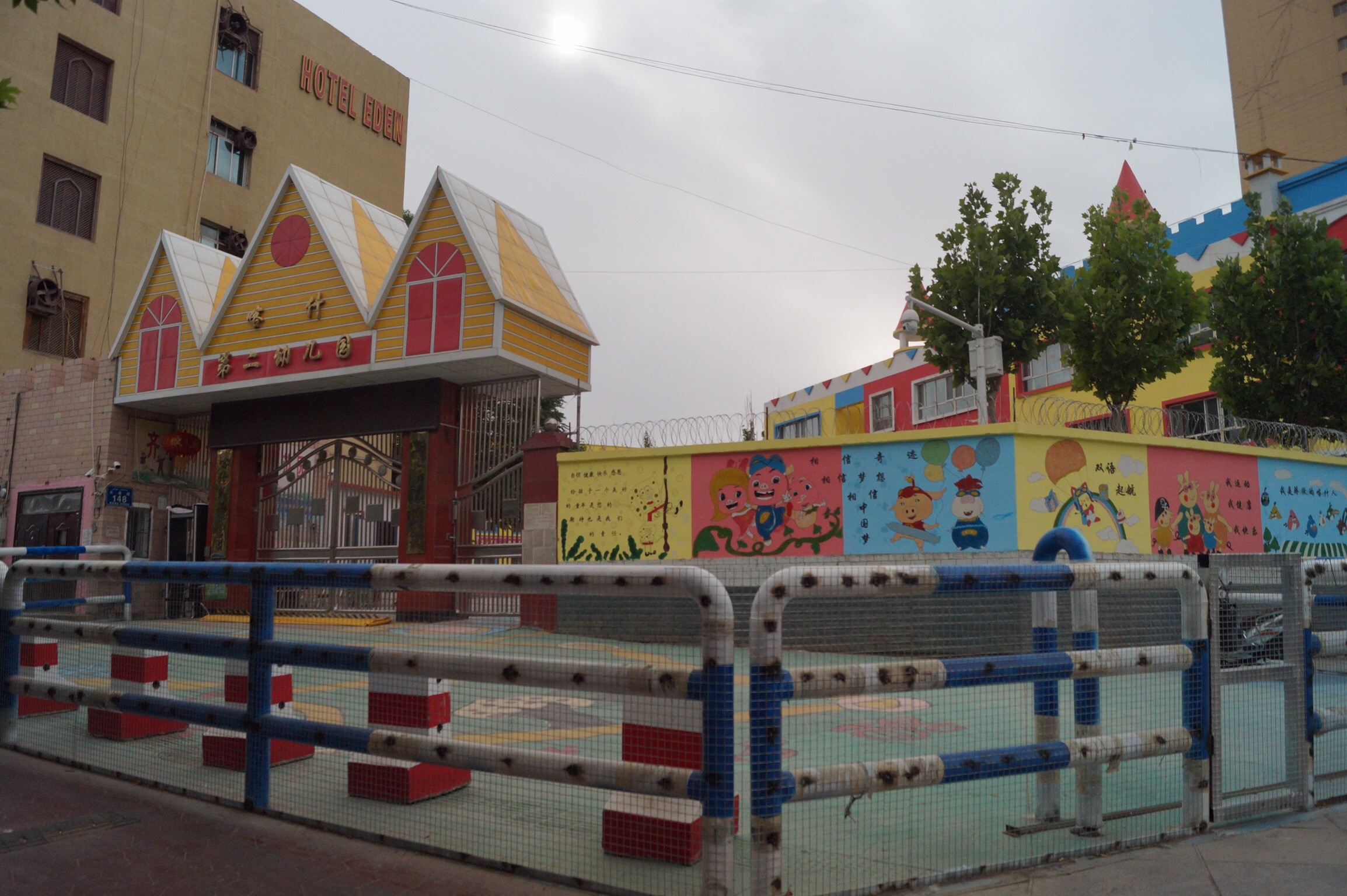 Even schools are barricaded like fortresses with armed guards when open, we weren't allowed to take any photos of the police or military.
The police checks both on the road and to in towns were oppressively omnipresent. However we never felt at all at threat from the local population who were trying the best they could under extreme stress to go about their everyday business. The agency we used had done a great job with the paperwork and our 5 different guides were brilliant at liaising with the police in such sensitive regions. Lhasa had as many police posts but the policemen were far more relaxed and although there appeared to be as many restrictions there seemed to be scope for the local police to use their discretion. This article from Reuters has some of the background behind the changes: https://widerimage.reuters.com/story/uighur-heartland-transformed-into-security-state . The heavy handed approach and the lack of freedom really upset us, I just can't imagine what it is doing to the local population. It certainly isn't a "winning hearts and minds" approach to governance. Although all over Xinjiang, even way out in the desert miles from anywhere (except the frequent police posts) were huge propaganda posters.
Apart from the above we loved the rest of the experience, especially in Tibet. The beauty of the mountains and the deep spirituality of the people will last in my mind for a long time. It was such a privilege to visit such a unique and ancient place. Some of my favourite memories are of circumambulating Barkhor kora (pilgrimage circuit) in the evening. People smiling and welcoming us to walk amongst them as they prayerfully circuited the holy site. They were particularly pleased to see the girls, walking behind you could see the whispers go out and people turning and smiling towards them. The girl's presence brought out delighted faces and attempts at communication in a shared language of gestures and smiles.
Even schools are barricaded like fortresses with armed guards when open, we weren't allowed to take any photos of the police or military.
The police checks both on the road and to in towns were oppressively omnipresent. However we never felt at all at threat from the local population who were trying the best they could under extreme stress to go about their everyday business. The agency we used had done a great job with the paperwork and our 5 different guides were brilliant at liaising with the police in such sensitive regions. Lhasa had as many police posts but the policemen were far more relaxed and although there appeared to be as many restrictions there seemed to be scope for the local police to use their discretion. This article from Reuters has some of the background behind the changes: https://widerimage.reuters.com/story/uighur-heartland-transformed-into-security-state . The heavy handed approach and the lack of freedom really upset us, I just can't imagine what it is doing to the local population. It certainly isn't a "winning hearts and minds" approach to governance. Although all over Xinjiang, even way out in the desert miles from anywhere (except the frequent police posts) were huge propaganda posters.
Apart from the above we loved the rest of the experience, especially in Tibet. The beauty of the mountains and the deep spirituality of the people will last in my mind for a long time. It was such a privilege to visit such a unique and ancient place. Some of my favourite memories are of circumambulating Barkhor kora (pilgrimage circuit) in the evening. People smiling and welcoming us to walk amongst them as they prayerfully circuited the holy site. They were particularly pleased to see the girls, walking behind you could see the whispers go out and people turning and smiling towards them. The girl's presence brought out delighted faces and attempts at communication in a shared language of gestures and smiles.
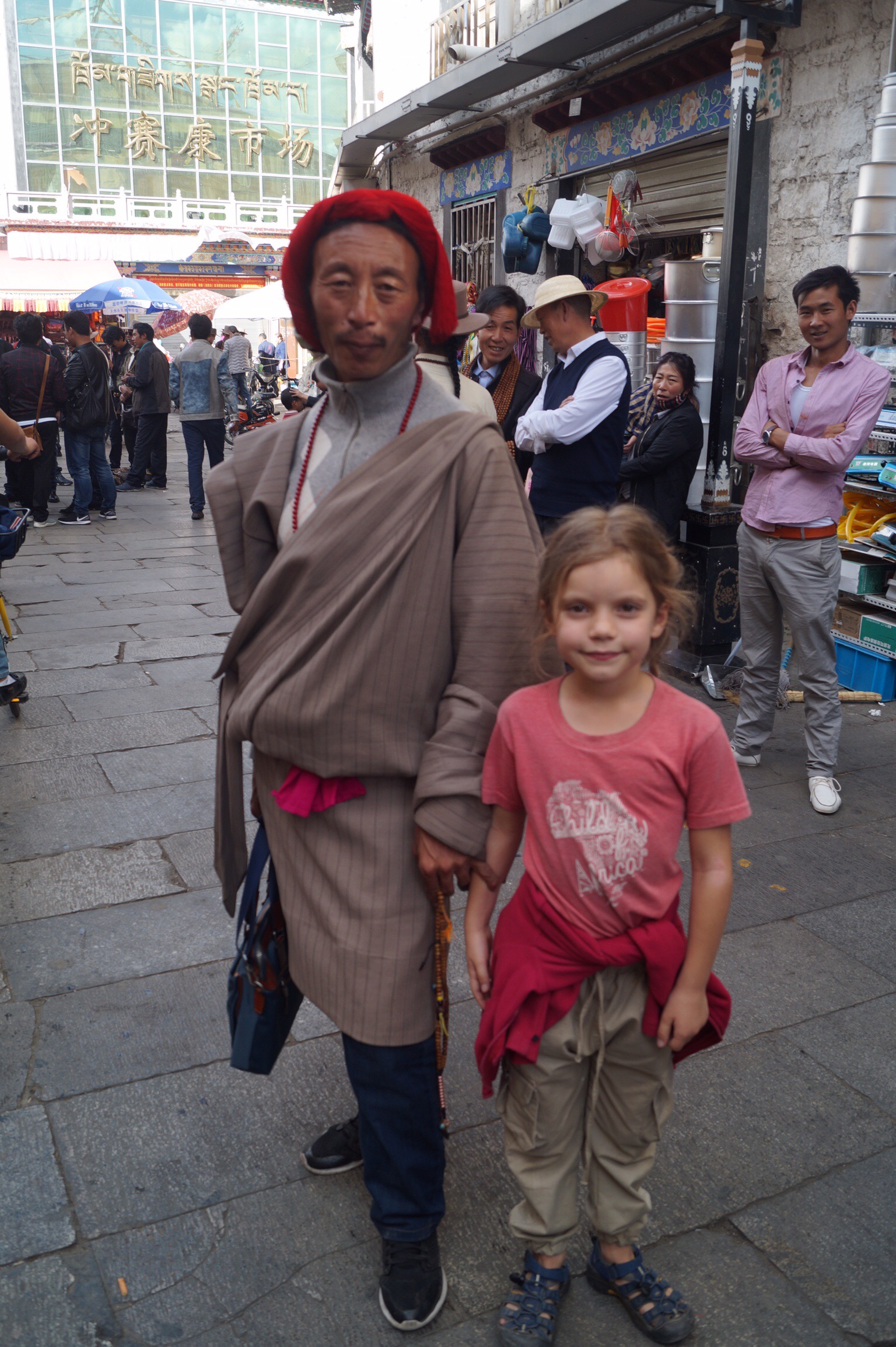 Despite the affects of altitude, I could happily spend much more time up in the high mountains. It was amazing to drive up to Everest Basecamp. We were so happy that neither the humans nor the truck suffered from bad altitude problems. It wasn't pleasant coming up so quickly onto the plateau, 3 really long days driving combined with concerns about altitude sickness was very stressful but thankfully none of us got anything serious.
China is making great leaps economically and developmentally, it is amazing to hear how quickly things are changing. It sounds like public works and roads are completed in record time even in inhospitable areas. All across the thousands of kilometres we drove through the Taklimakan on a smooth ribbon of tarmac, trees are being planted and irrigated along the roads, greening the desert.
Steve
Firstly I think I should say we have only really been in two provinces in China, Xinjiang and Tibet so our reflections are really regarding those provinces rather than China as a whole most of which I know from previous travels is quite different. We have spent almost a month in China and driven over 7,000kms yet we have only seen a fraction of China. It's been exhausting but exhilarating at the same time.
It's not easy or cheap getting into China with your own vehicle but it was all well organised and the guides we had were great especially having to put up with my frustrations at times.
The highlight for me was making Everest Base Camp and the scenery along the whole drive in Tibet was just fantastic. It was also interesting to visit the various monasteries and to see how Buddhism is still so important to the Tibetans.
Despite the affects of altitude, I could happily spend much more time up in the high mountains. It was amazing to drive up to Everest Basecamp. We were so happy that neither the humans nor the truck suffered from bad altitude problems. It wasn't pleasant coming up so quickly onto the plateau, 3 really long days driving combined with concerns about altitude sickness was very stressful but thankfully none of us got anything serious.
China is making great leaps economically and developmentally, it is amazing to hear how quickly things are changing. It sounds like public works and roads are completed in record time even in inhospitable areas. All across the thousands of kilometres we drove through the Taklimakan on a smooth ribbon of tarmac, trees are being planted and irrigated along the roads, greening the desert.
Steve
Firstly I think I should say we have only really been in two provinces in China, Xinjiang and Tibet so our reflections are really regarding those provinces rather than China as a whole most of which I know from previous travels is quite different. We have spent almost a month in China and driven over 7,000kms yet we have only seen a fraction of China. It's been exhausting but exhilarating at the same time.
It's not easy or cheap getting into China with your own vehicle but it was all well organised and the guides we had were great especially having to put up with my frustrations at times.
The highlight for me was making Everest Base Camp and the scenery along the whole drive in Tibet was just fantastic. It was also interesting to visit the various monasteries and to see how Buddhism is still so important to the Tibetans.
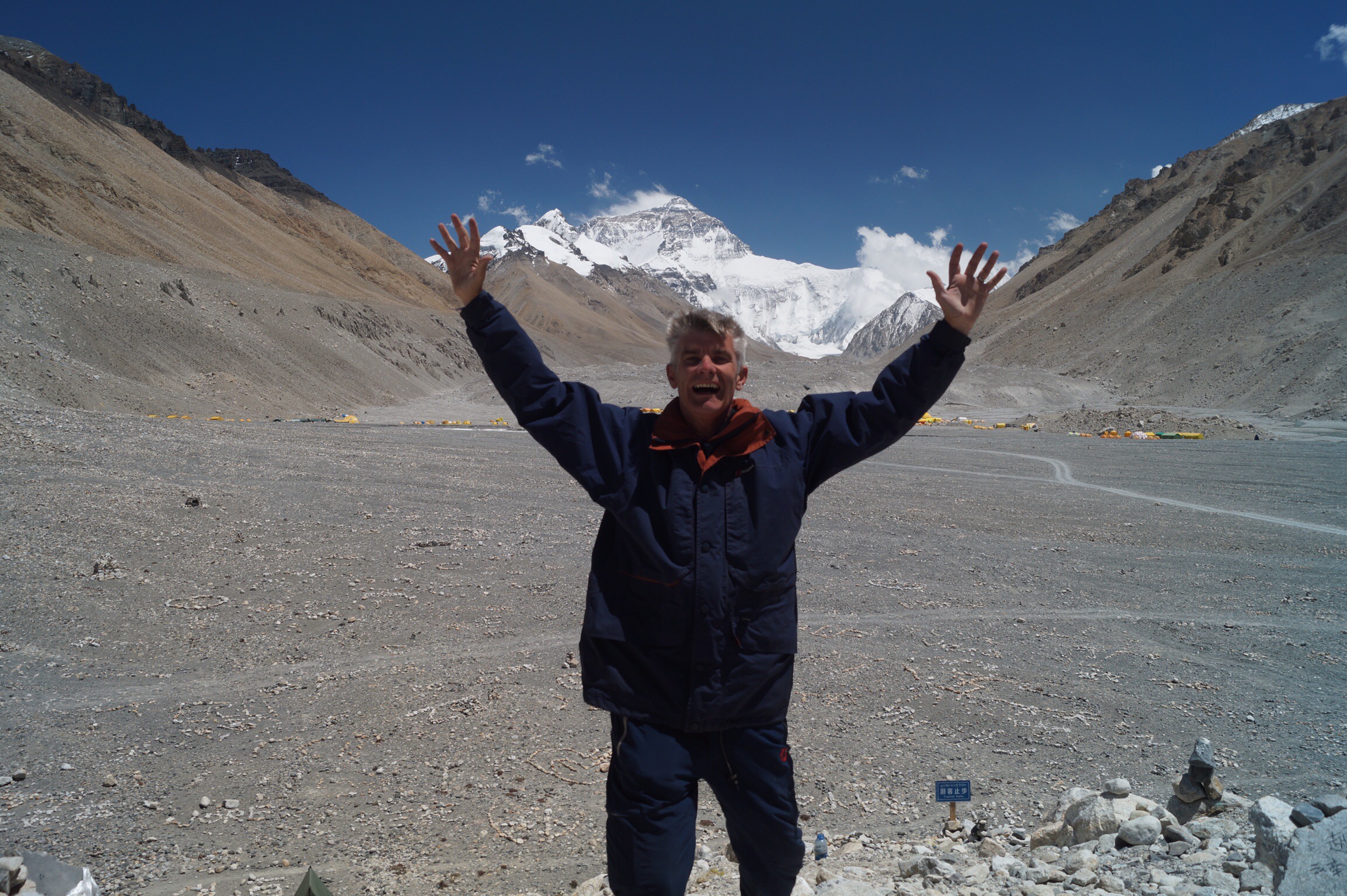 I wish I could say the same about the authorities. In all our travels we have never been subject to so many police checks, registrations etc. I know we are only tourists so it is much worse for the local population. The sufferings of the people in Tibet are well documented but we were surprised to see it in Xinjiang province too. Kashgar felt like a city that was occupied by an invading army. The authorities were keen that we did not see or know anything about this but the way they went about it really just highlighted the oppression. It really makes me appreciate the value of living in a free society and how important it is to retain those freedoms regardless of any terrorist or other threat.
Does a petrol station need to look like a military encampment?
I wish I could say the same about the authorities. In all our travels we have never been subject to so many police checks, registrations etc. I know we are only tourists so it is much worse for the local population. The sufferings of the people in Tibet are well documented but we were surprised to see it in Xinjiang province too. Kashgar felt like a city that was occupied by an invading army. The authorities were keen that we did not see or know anything about this but the way they went about it really just highlighted the oppression. It really makes me appreciate the value of living in a free society and how important it is to retain those freedoms regardless of any terrorist or other threat.
Does a petrol station need to look like a military encampment?
